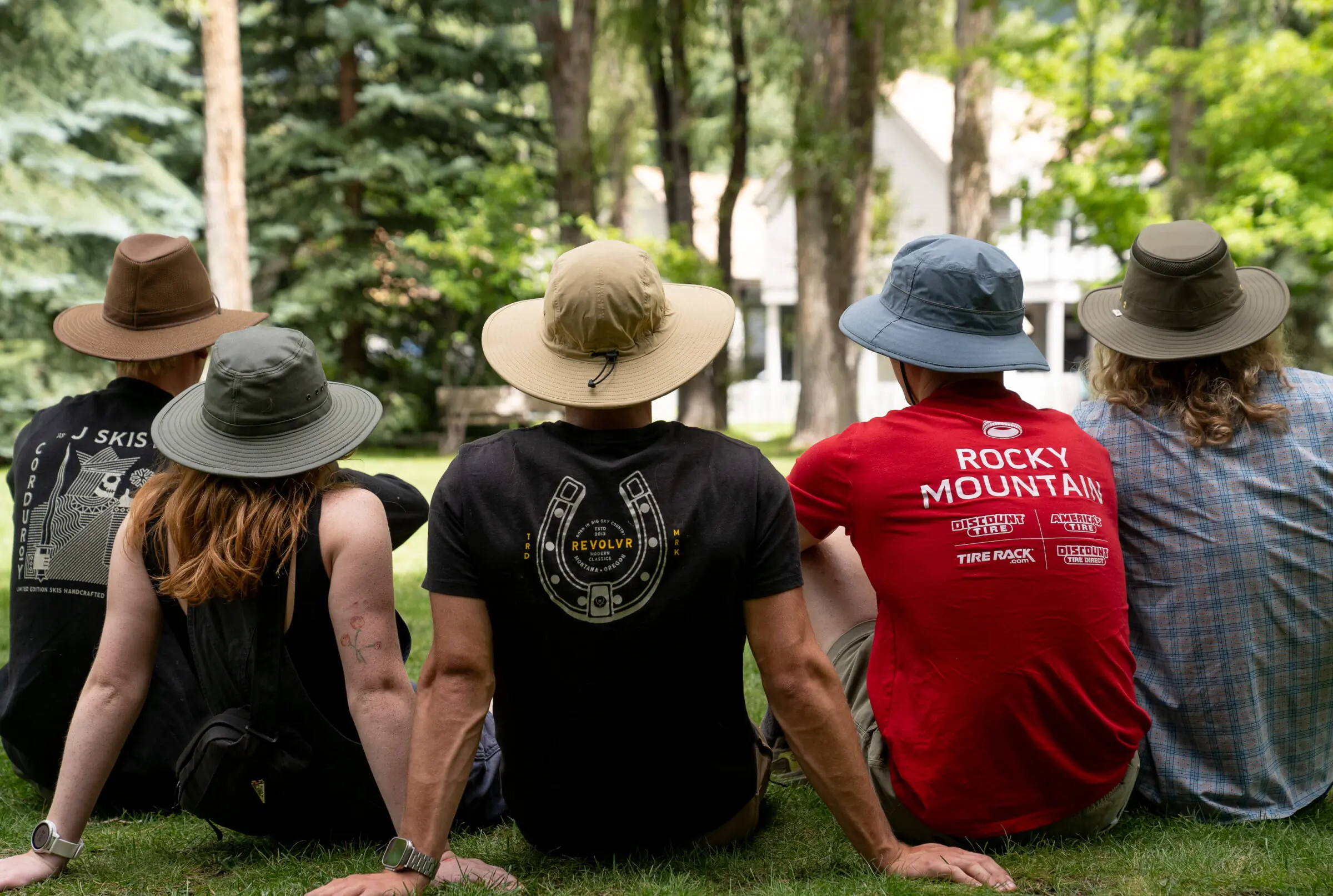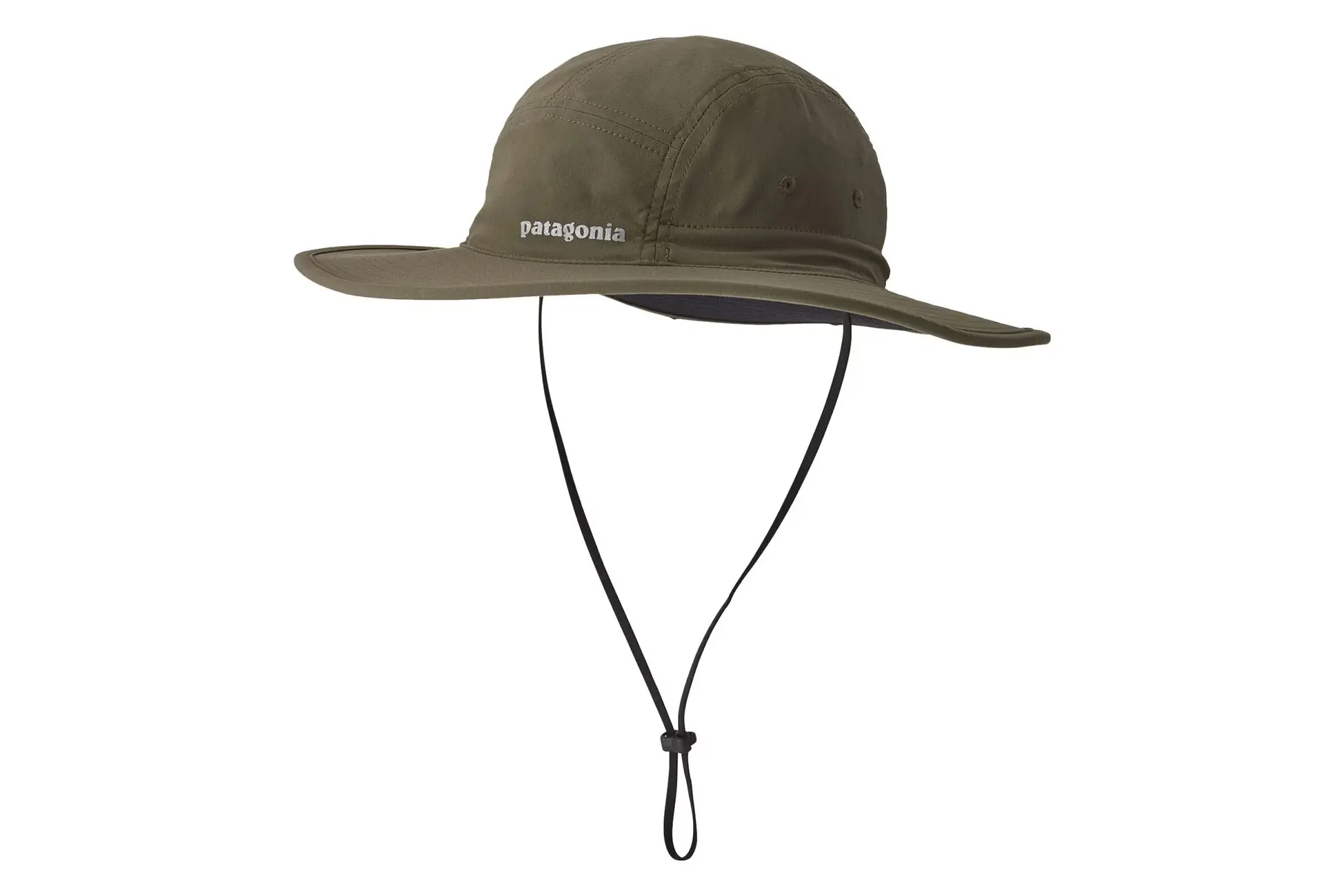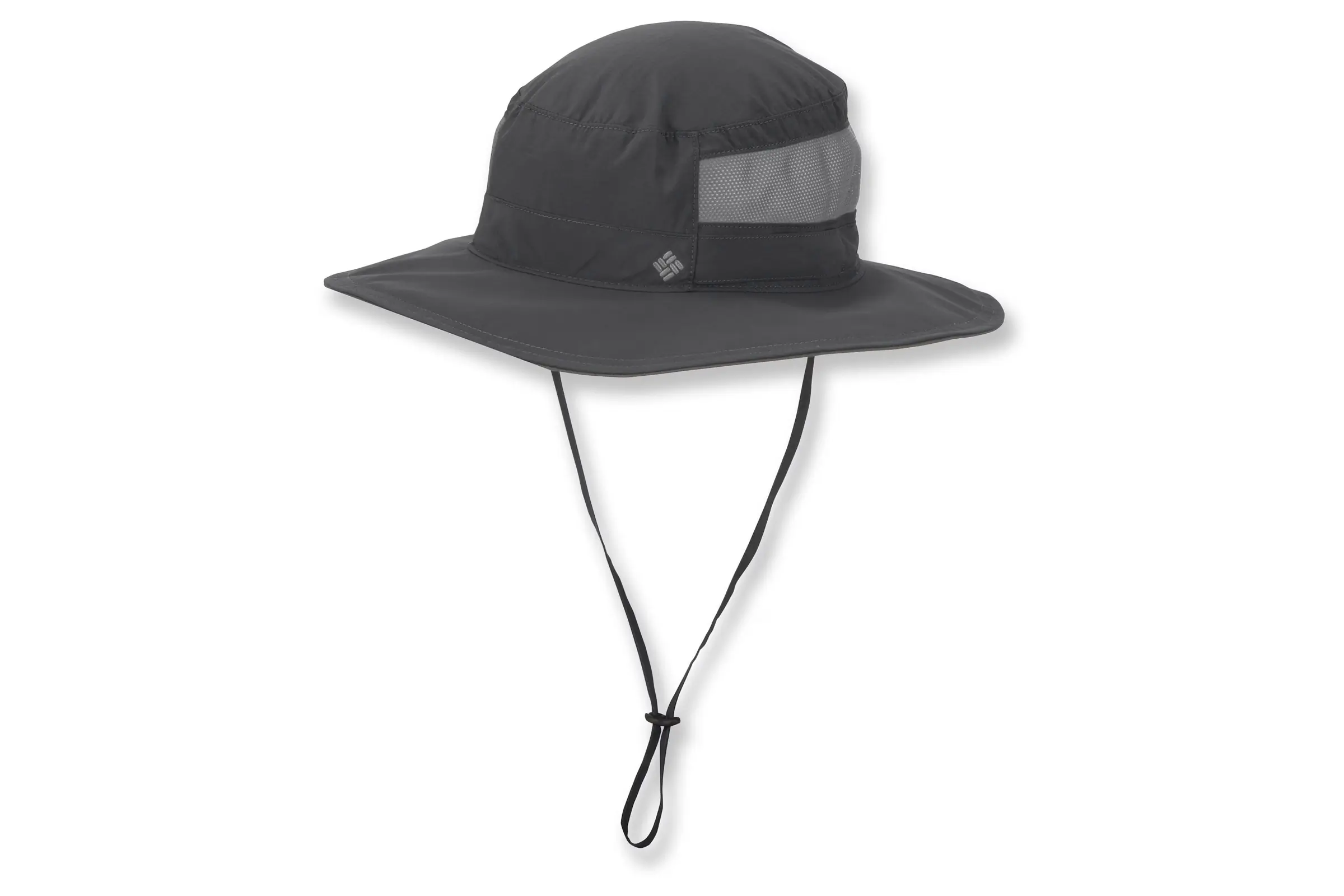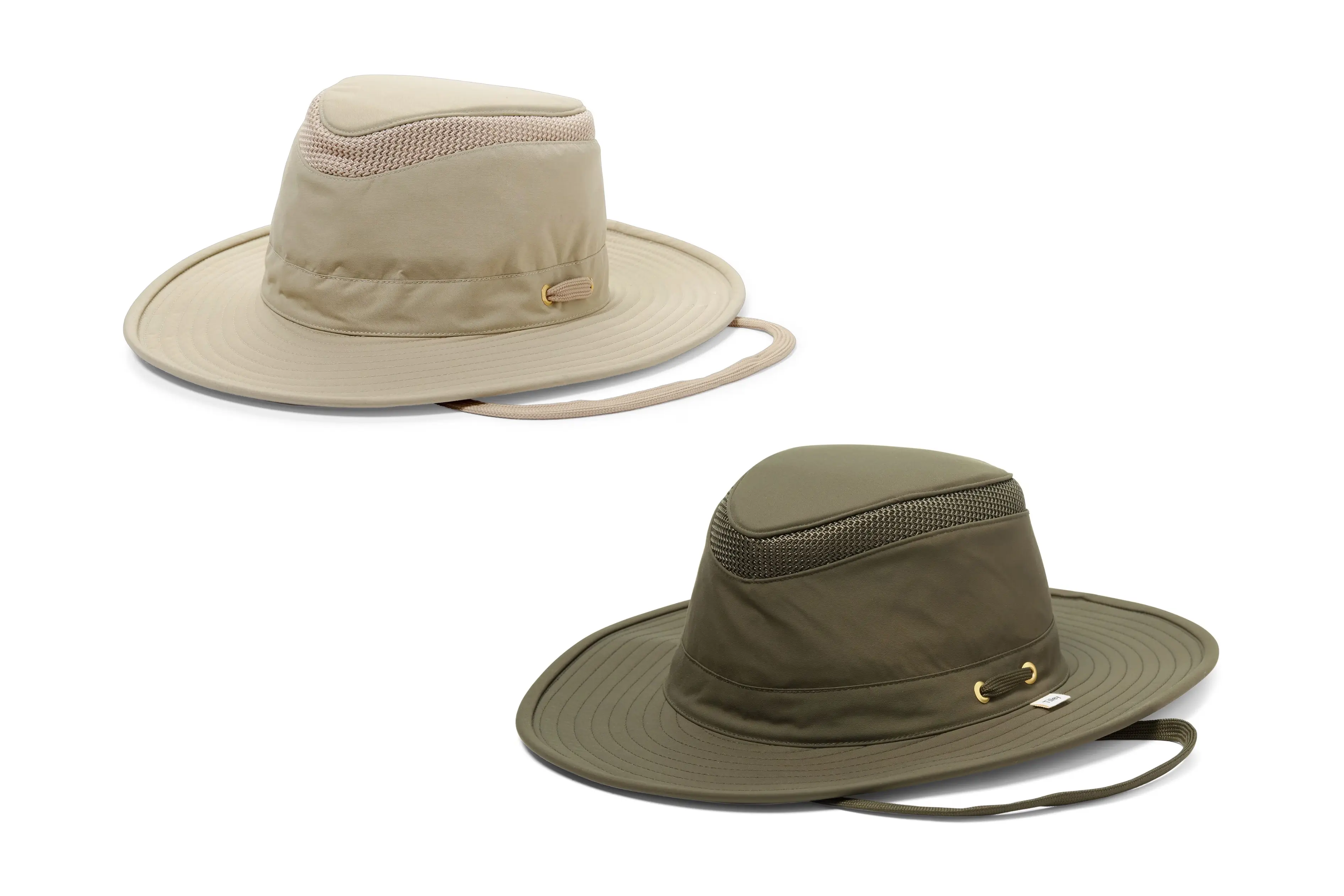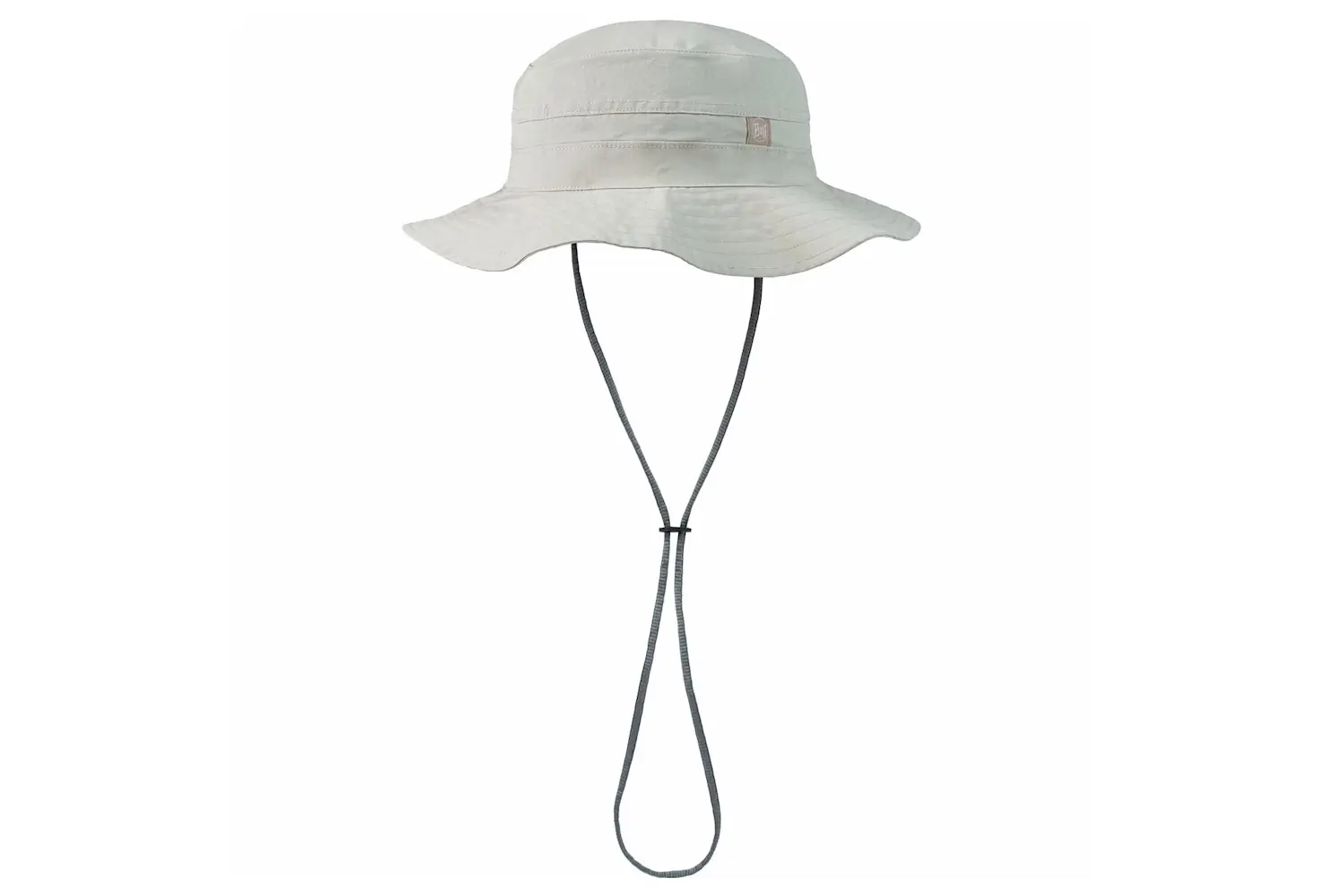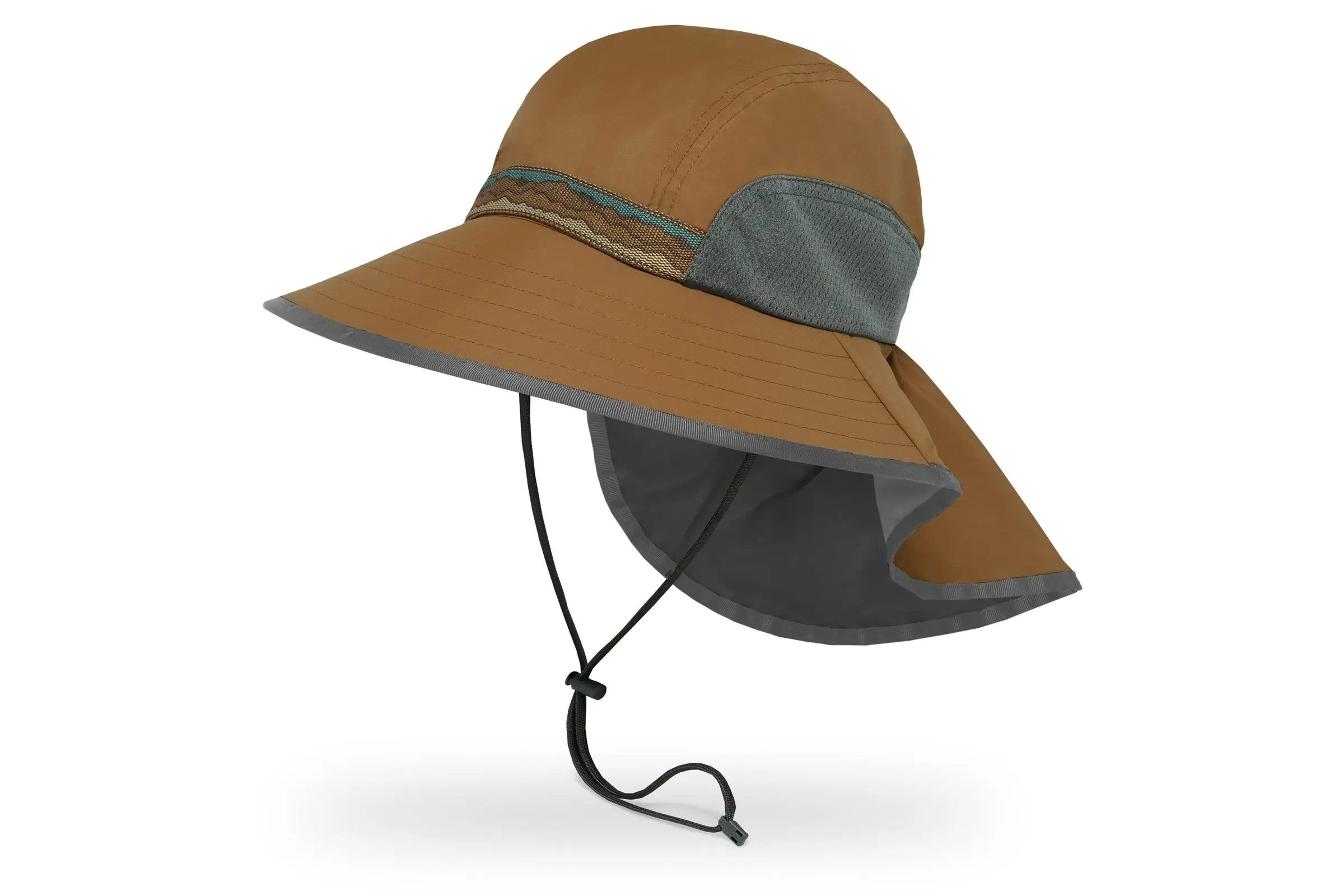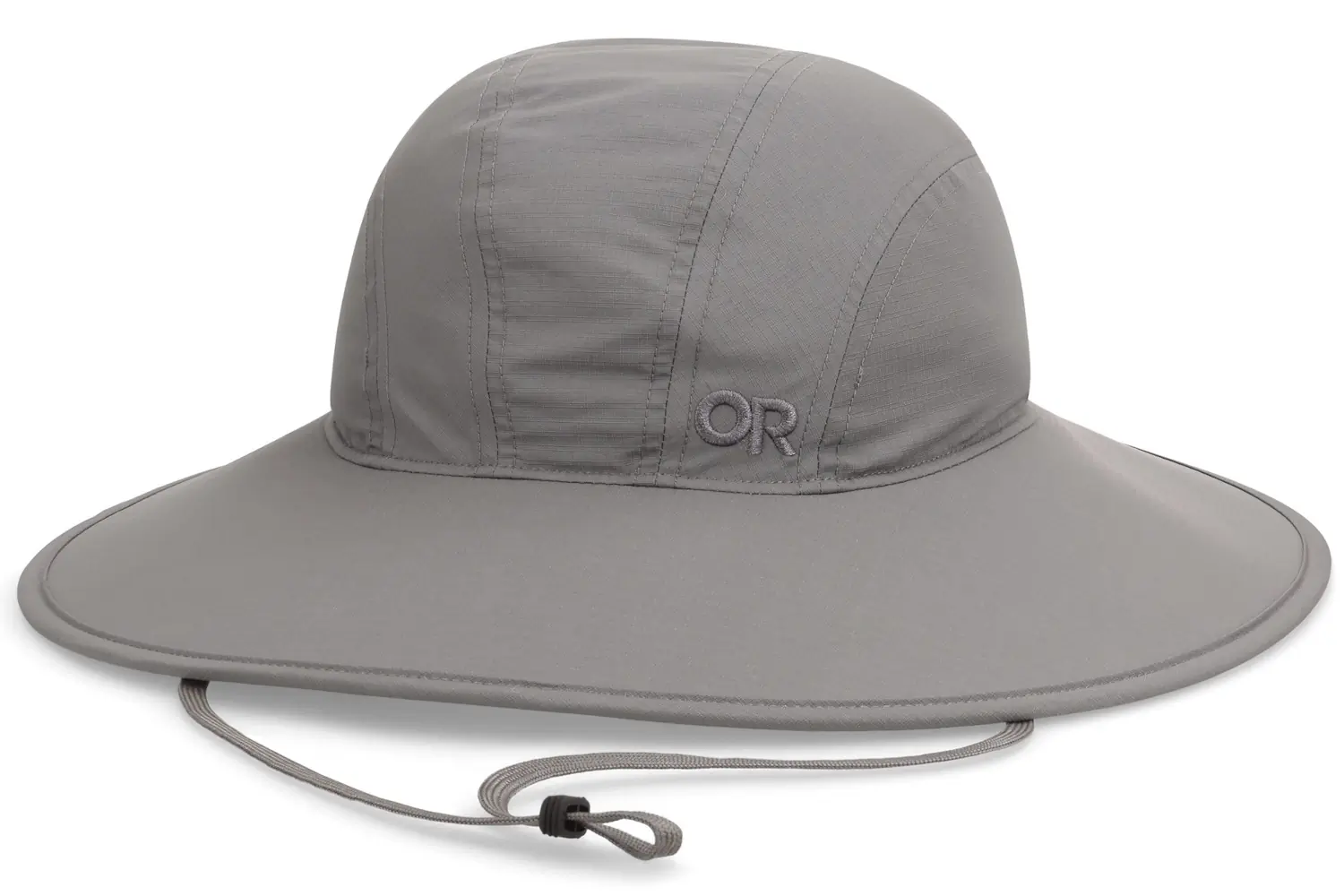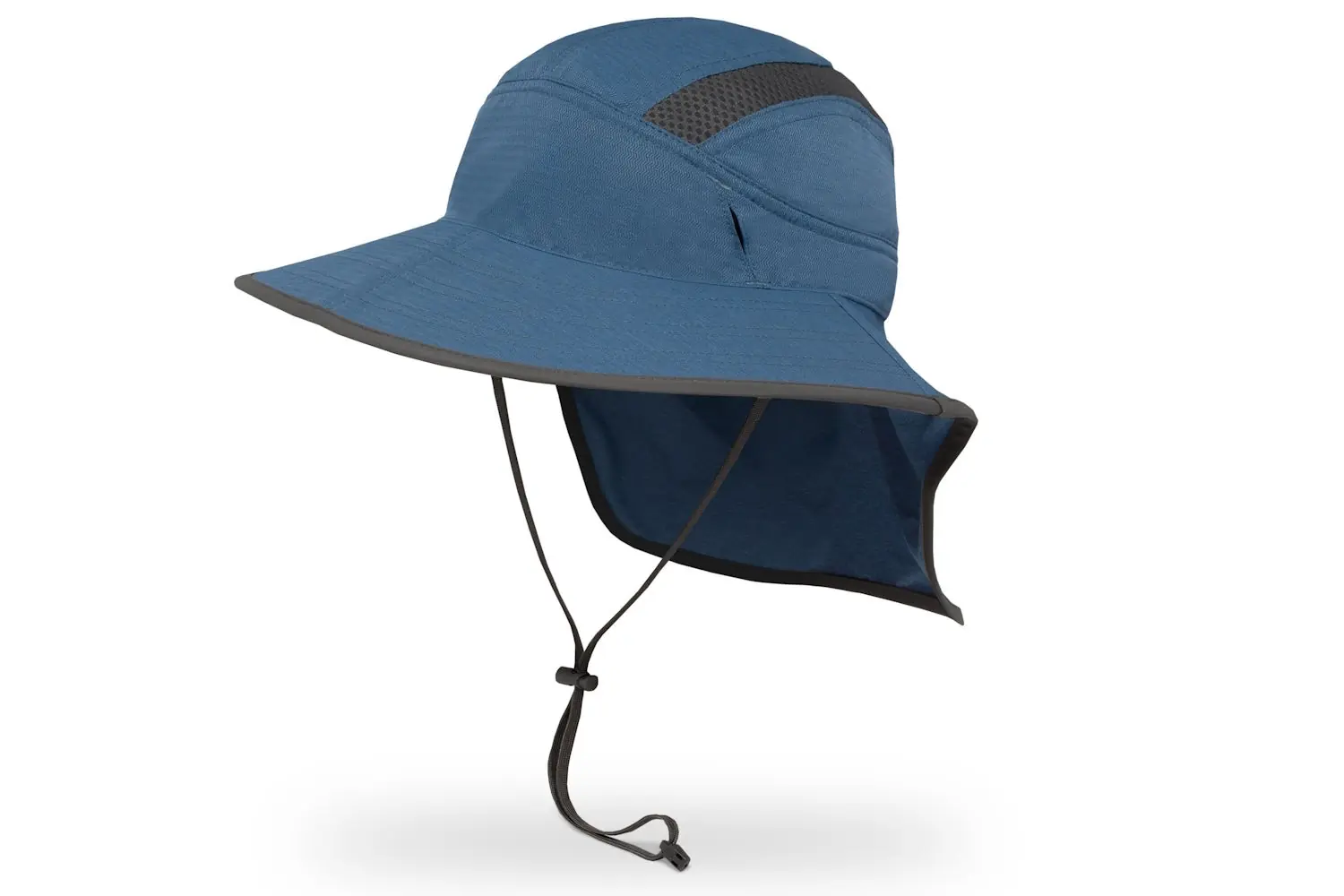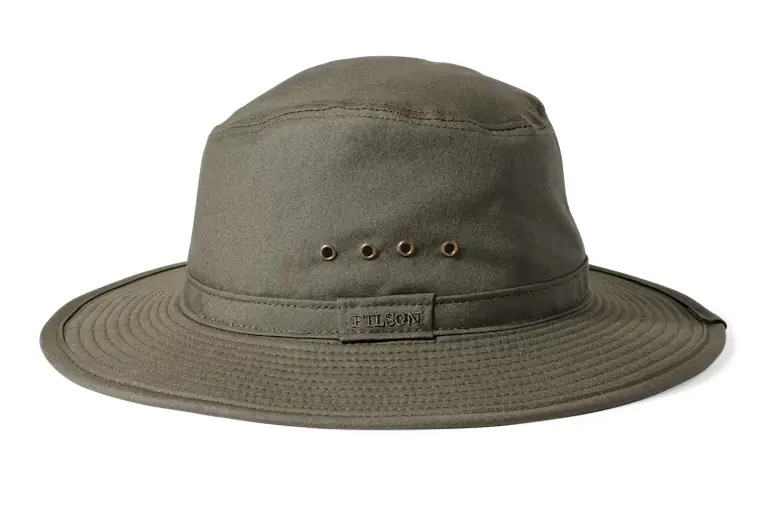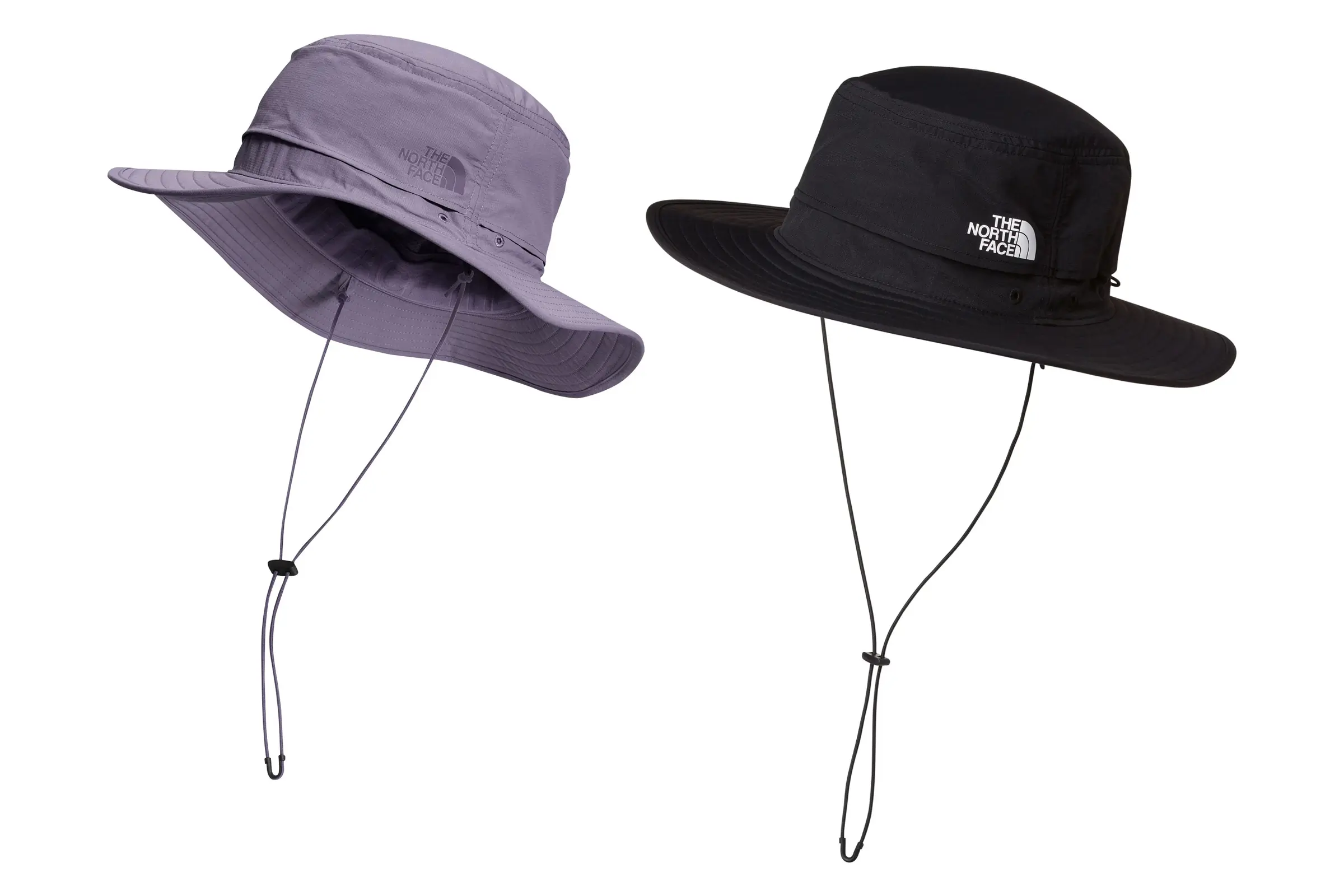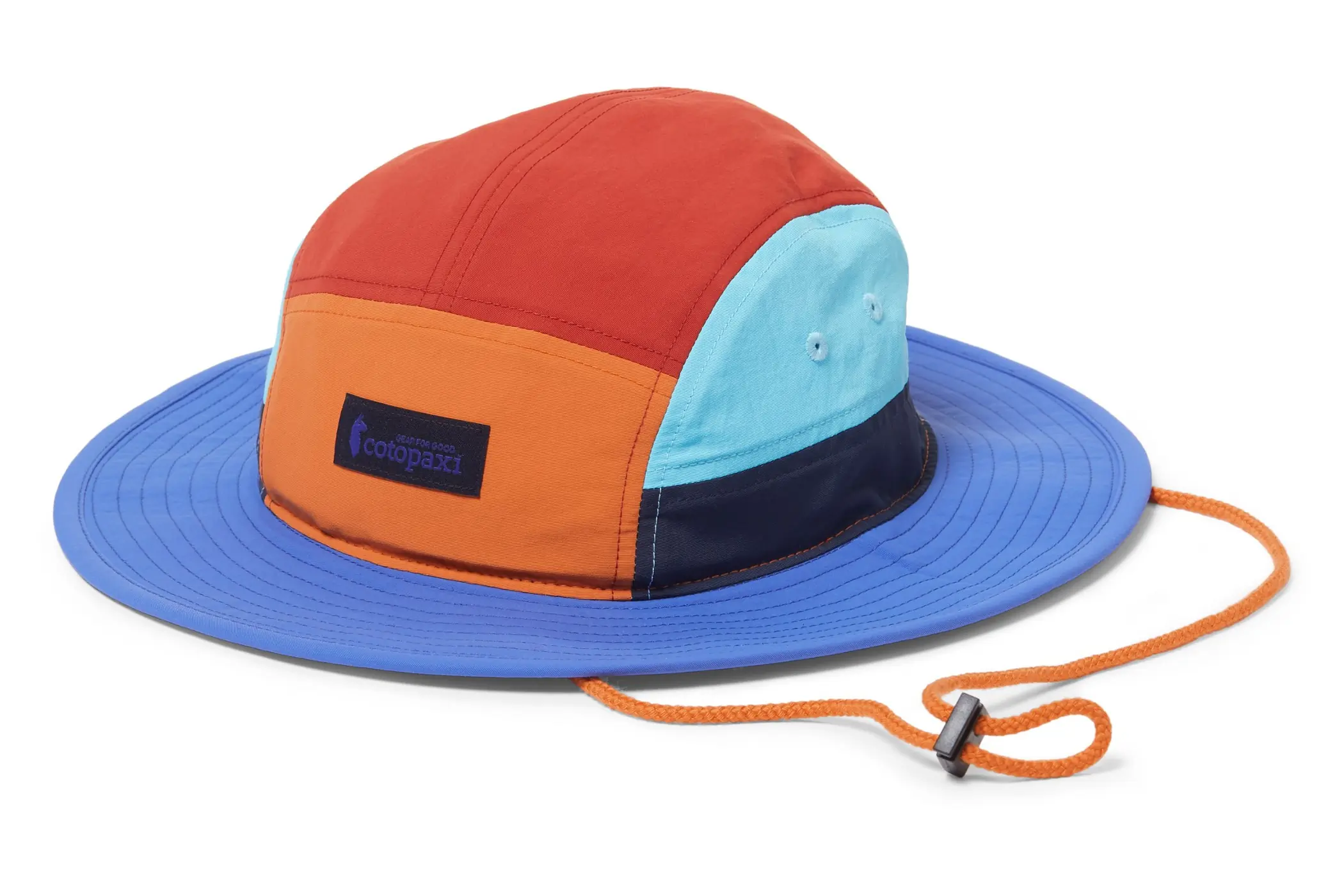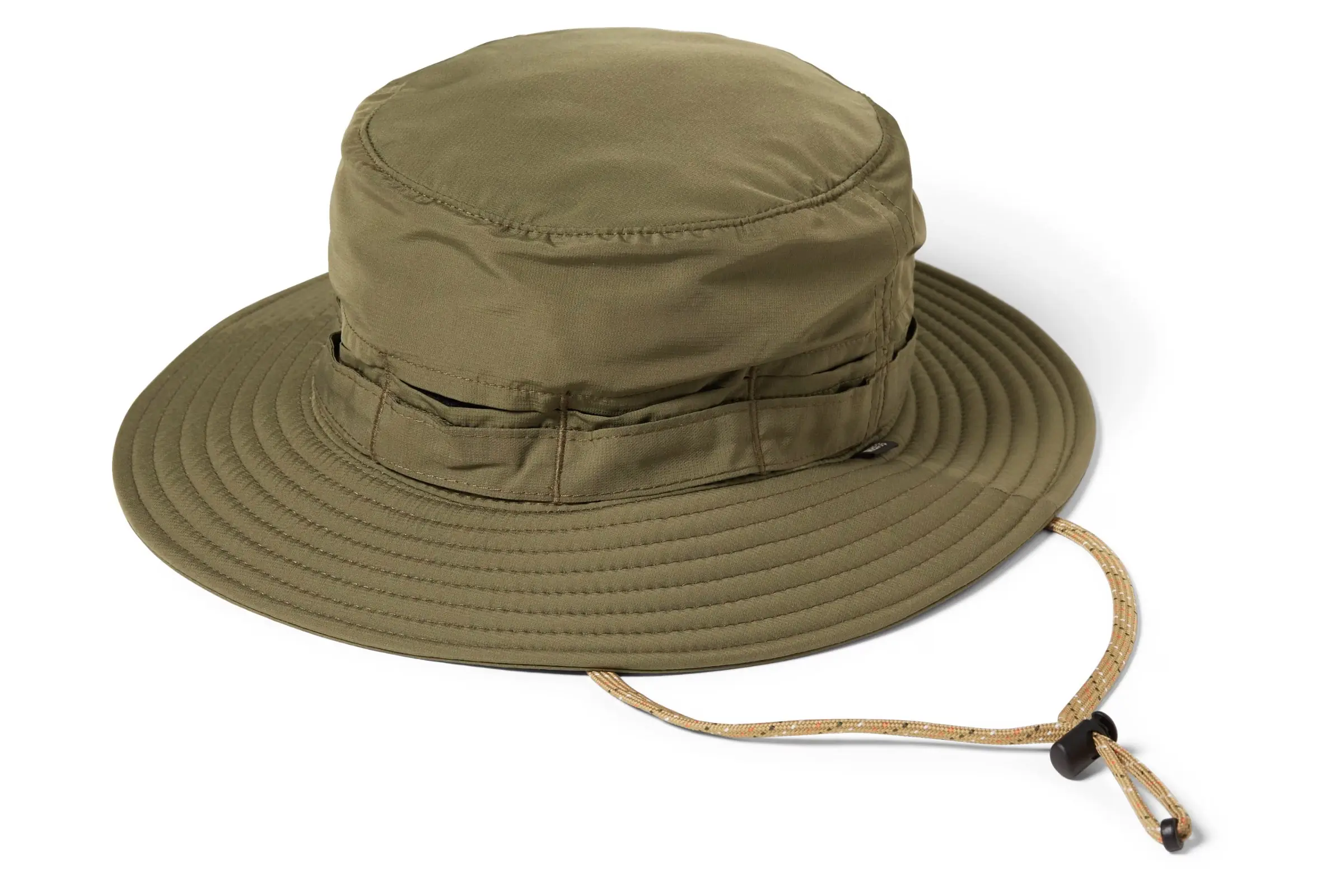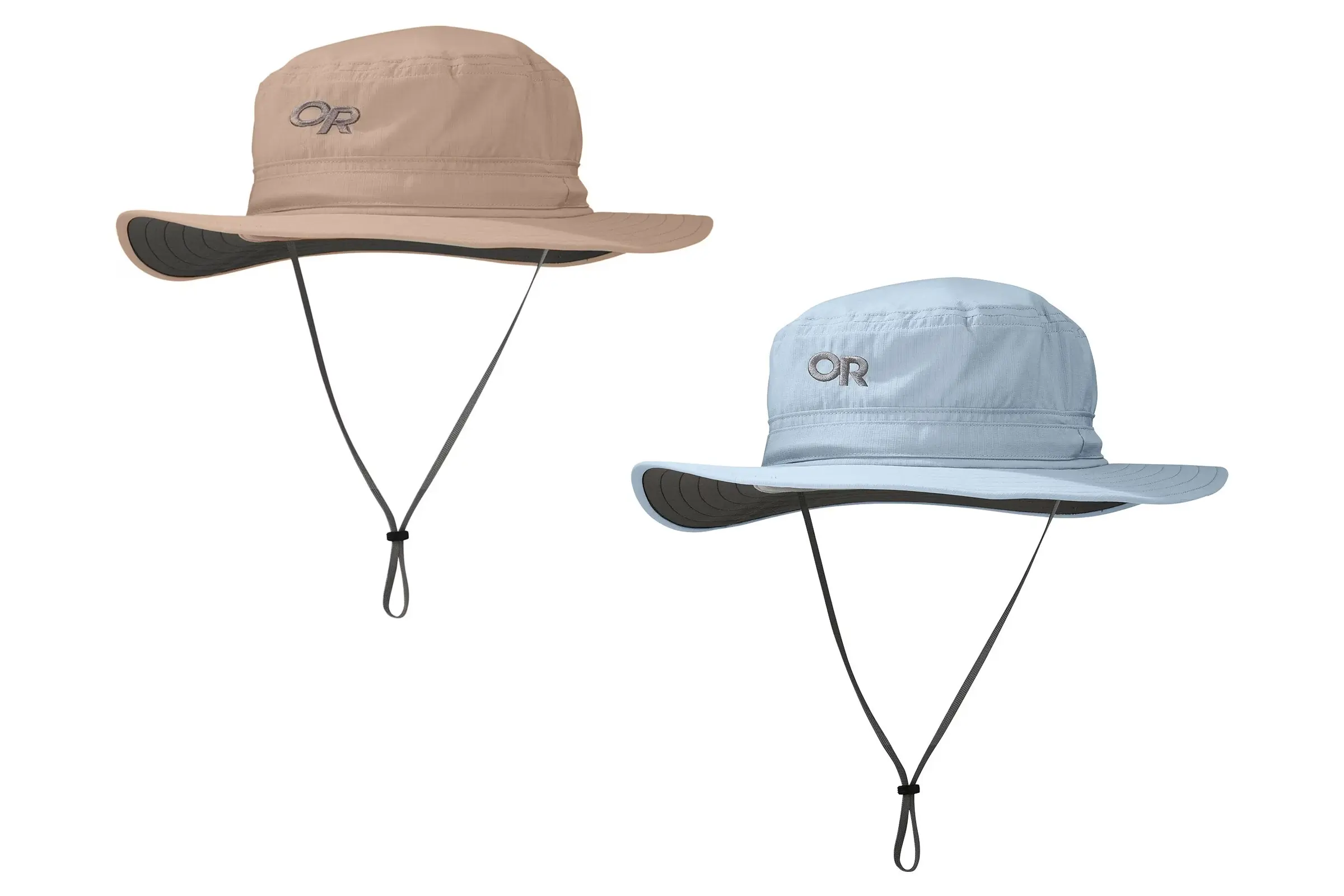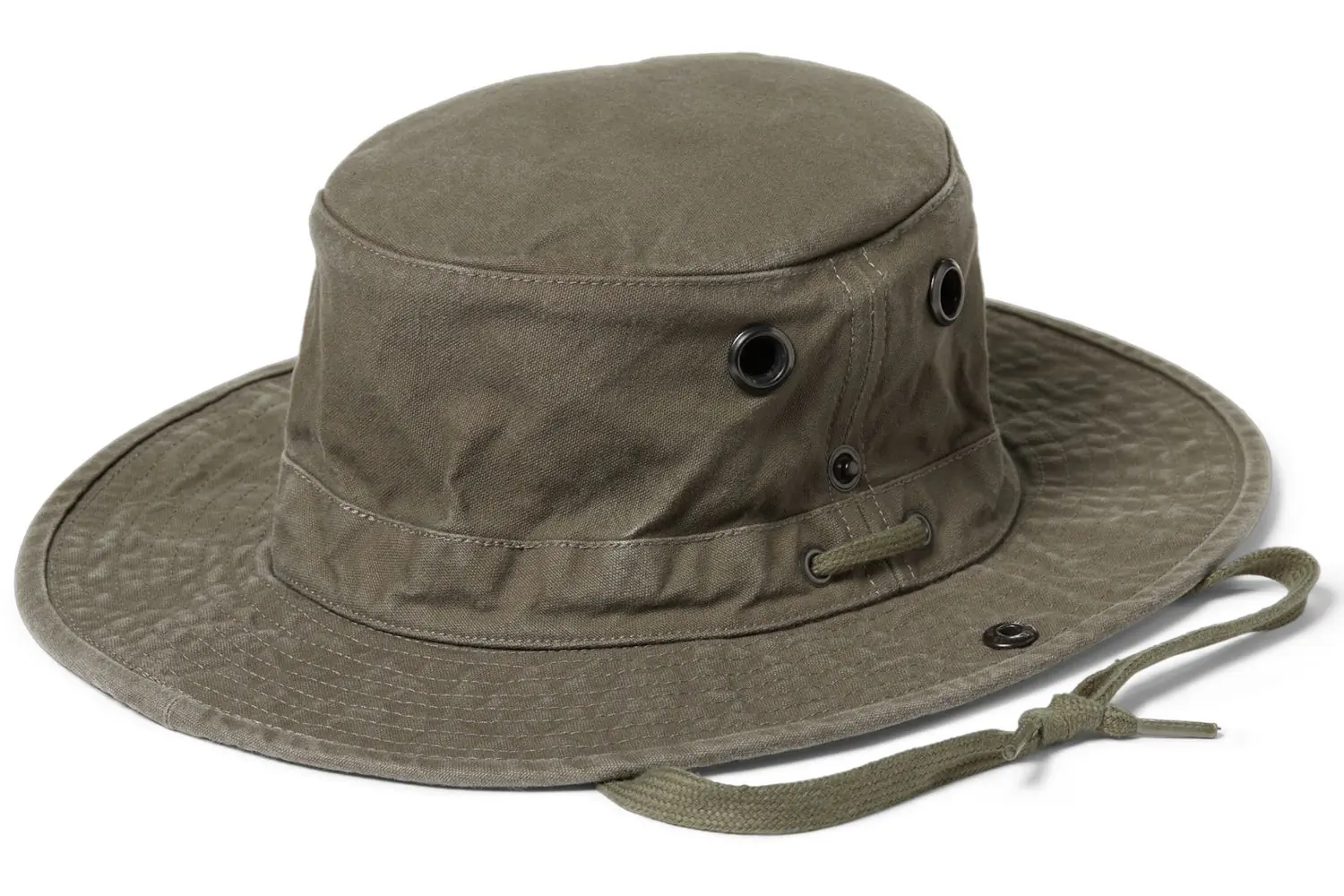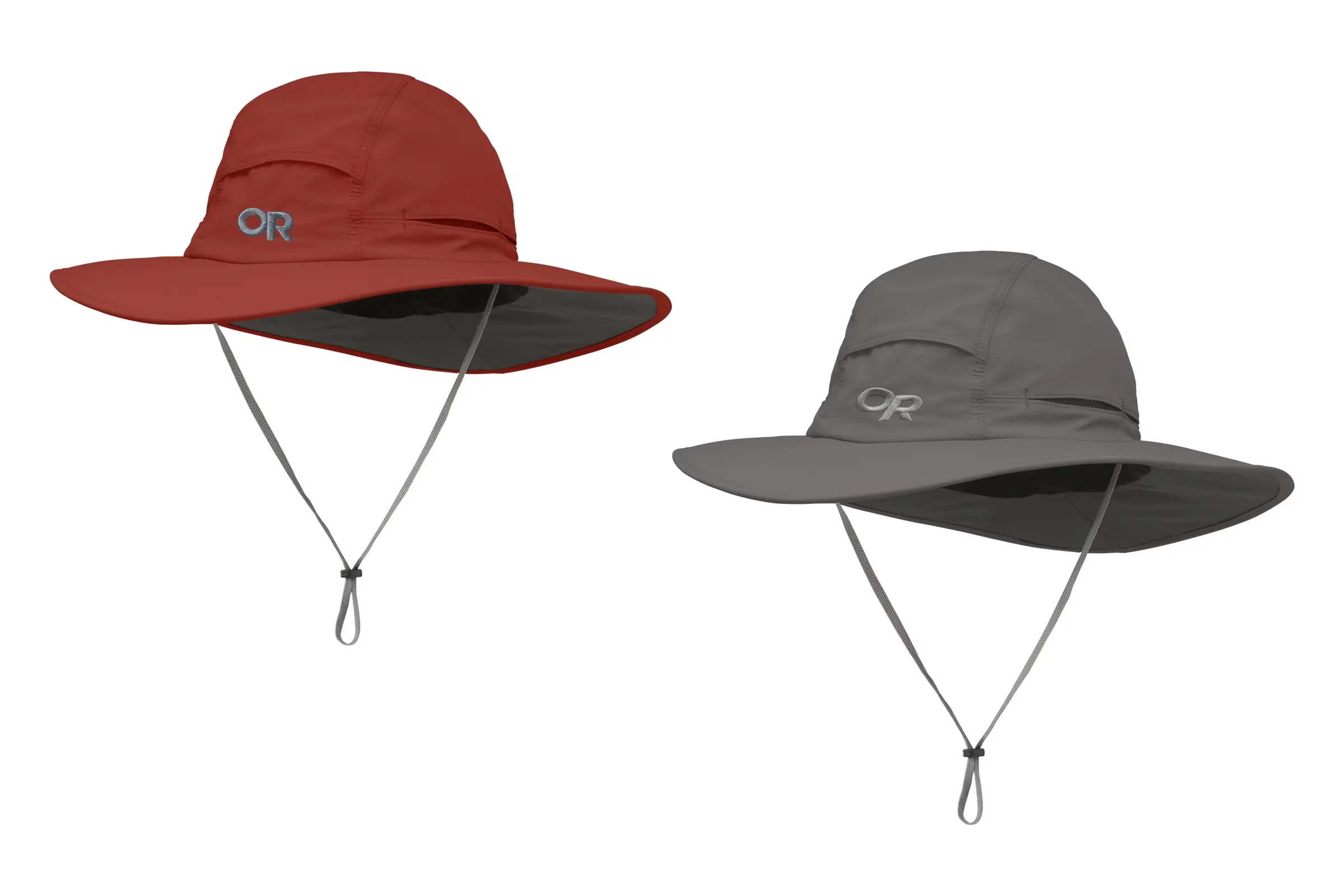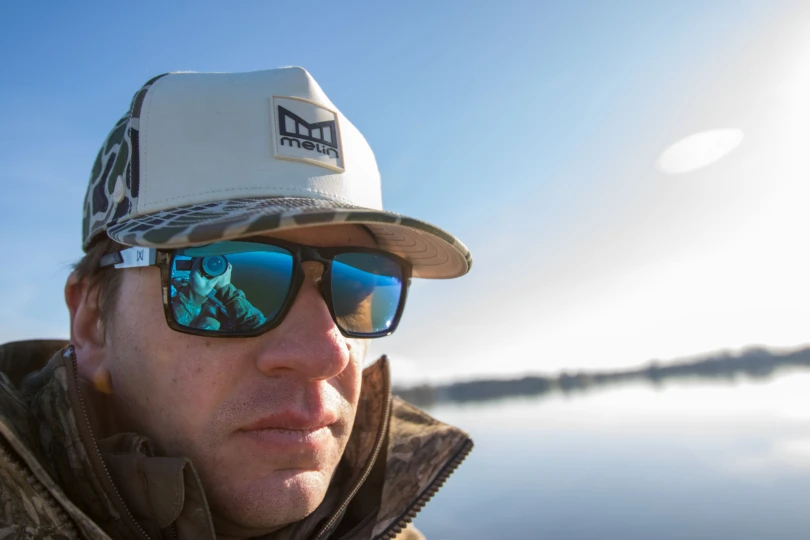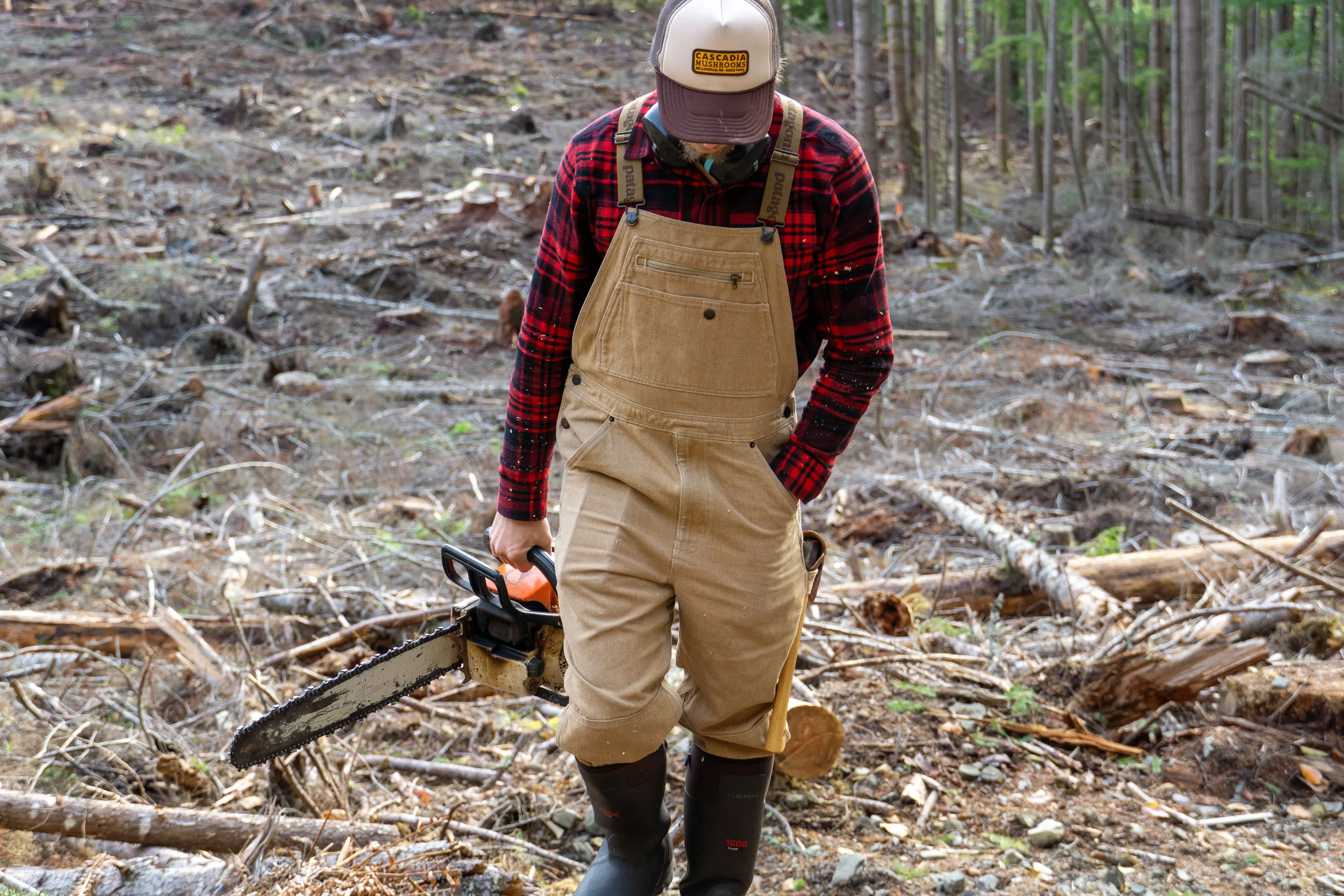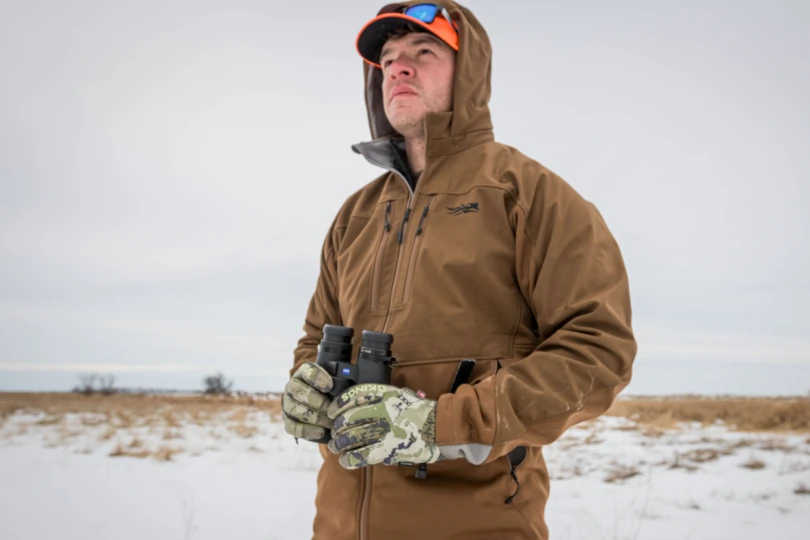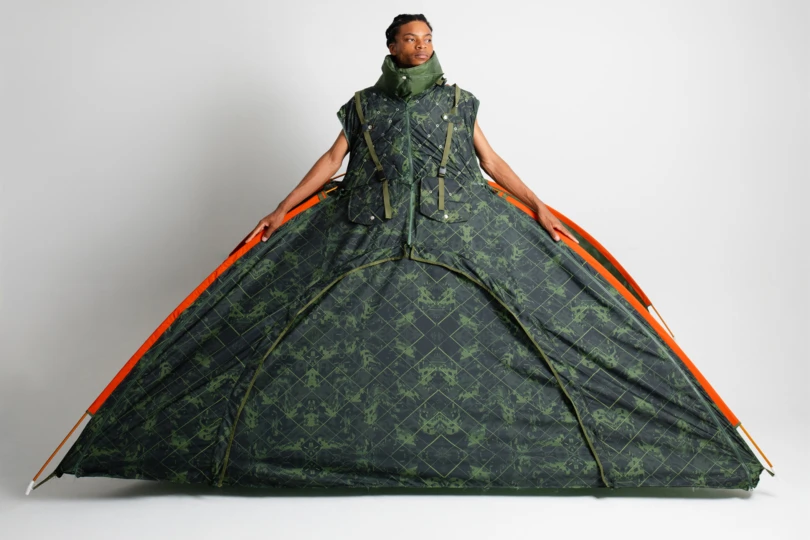Sun blazing overhead, miles to go — the best sun hats shield your head, face, and shoulders from harsh UV so you can stay cool, sharp, and ready for that next climb, cast, or paddle stroke.
We tested over 20 hats in different environments to craft our selection of top picks based on UPF rating, durability, adjustability, and comfort. Our lead tester, Meghan LaHatte, has over 5 years of professional gear-testing experience. She brought each hat along on various adventures and travel scenarios to test each metric thoroughly.
Maybe you’re seeking the ultimate performance of our top pick, the Patagonia Quandary Brimmer Sun Hat. Or, perhaps you want a budget-friendly option like the Columbia Bora Bora Booney II Hat. No matter what you seek, we have you covered. From the beach to the mountains — or even your garden — these sun hats are top-notch. They’ll keep you cool, shaded, and outside longer.
Editor’s note: We updated this article on August 9, 2025, by revising our buyer’s guide to offer clearer, more helpful advice on choosing the best sun hat for your needs.
The Best Sun Hats of 2025
Patagonia Quandary Brimmer Sun Hat
- Weight: 4.05 oz (115 g)
- Material: 96% recycled nylon/4% spandex plain weave with a DWR finish. Sweatband: 100% recycled double-knit polyester
- Brim size: 3.5 in.
- UPF rating: 40+
- Style: Hiking
Pros
- Lightweight
- Adjustable fit
- Inner-sweatband keeps head dry
- Larger, semi-rigid brim
Cons
- Color selection limited
- Pricey
Columbia Bora Bora Booney II Hat
- Weight: n/a
- Material: Textured poplin 100% nylon
- Brim: size 3 in.
- UPF rating: 50+ (excludes mesh)
- Style: Hiking
Pros
- Adjustable
- Stays secure in wind
- Generous brim
Cons
- One-size
- Mesh panels may cause some UV exposure
Tilley LTM6 Airflo Broad Brim Hat
- Weight: 4 oz (113 g)
- Material: 100% Recycled Nylon. Mesh: 100% polyester
- Brim size: 3.25 in.
- UPF rating: UPF 50
- Style: Safari
Pros
- Breathable
- Inner pocket for ID
- Stylish with several color and size options
- Lifetime guarantee
Cons
- Expensive
- Not as packable
- Adjustability needs improvements
Buff Explore Booney Hat
- Weight: 2.4 oz (68 g)
- Material: 100% recycled nylon and polyester
- Brim size: 2.5 in.
- UPF rating: 50
- Style: Bucket
Pros
- Extremely lightweight and packs into itself
- UPF 50 fabric provides decent sun protection
- Breathable venting
Cons
- Smaller brim does not provide generous coverage
- Chin strap toggle would benefit from stronger toggle
- Hat design lacks structure
Sunday Afternoons Adventure Hat
- Weight: 3 oz (85 g)
- Material: Nylon/Polyester
- Brim size: 4 in. front/7.5 in. neck cape
- UPF rating: 50+
- Style: Full-coverage hiking
Pros
- Full face and neck protection
- Packable
- Floats in water
Cons
- Not the most stylish
- Brim may be too cumbersome for some
Outdoor Research Women’s Oasis Sun Hat
- Weight: 3.4 oz (96 g)
- Material: 89% nylon, 11% polyester shell
- Brim size: 3.5 in. (front) 4.75 in. (back)
- UPF rating: 50
- Style: Hiking
Pros
- Varied brim size provides extra coverage for the neck area
- Lightweight and breathable fabric
- Stiff brim won’t flop in face
- It floats
Cons
- Leaves forehead indentations
- Not super packable
Sunday Afternoons Ultra Adventure Hat
- Weight: 2.6 oz. (73.7 g)
- Material: 88% Nylon, 12% Polyester Dobby
- Brim size: 3¼ in. brim and 6 in. neck cape
- UPF rating: 50+
- Style: Full-coverage hiking
Pros
- Lightweight and easy to wear
- UPF 50+ material highly protective from rays
- Sunglass lock holds sunglasses on brim
Cons
- Shorter cape won’t provide as much protection as Adventure version
- A bit dorky looking
Other Sun Hats To Shade Your Noggin’
- Weight: 3.9 oz (110 g)
- Material: 9-oz. dry finish Shelter Cloth
- Brim size: 2.75 in.
- UPF rating: 50+
- Style: Fedora
Pros
- Stylish design looks sharp with any outfit
- Higher UPF
- Packable
- Generous size options
Cons
- Expensive
- Limited color options
- No chin strap
- Weight: 2.9 oz (82 g)
- Material: 100% recycled nylon/Lining:100% recycled polyester mesh
- Brim size: 2.9 in.
- UPF rating: 40+
- Style: Bucket/Hiking
Pros
- Lightweight
- Brim size won’t interfere with a backpack
- Breathable
Cons
- Brim lacks the structure of some others
- Limited size options
- Weight: N/A
- Material: 100% recycled nylon
- Brim size: 2.5 in.
- UPF rating: N/A
- Style: Bucket
Pros
- Packable, lightweight construction
- Unique colorways
- Adjustable chin strap
Cons
- Crown is not adjustable
- Small brim does not offer much protection beyond the face
- Weight: N/A
- Material: Polyester (Bluesign-approved)
- Brim size: 2.5 in.
- UPF rating: 50
- Style: Bucket
Pros
- Comfortably soft
- Breathable
- Floats in water
- Moisture wicking
Cons
- Smaller brim means less coverage
- Sizing runs large
- Weight: 2.3 oz. (65 g)
- Material: 89% nylon, 11% polyester, double weave ripstop main shell 100% Supplex nylon, plain weave under brim
- Brim size: 2.75 in.
- UPF rating: 50+
- Style: Hiking
Pros
- High UPF protection
- One-handed adjustability
- Quick-drying
Cons
- No sizing options for smaller heads
- Weight: 5.4 oz (153 g)
- Material: Cotton duck canvas
- Brim size: 2.4 in.
- UPF rating: 50
- Style: Safari/Boonie
Pros
- Highly durable canvas makeup
- Specific, numerical sizing makes it easy to find the perfect fit
- Versatile design can be worn in multiple styles
Cons
- Internal wind cord lacks a securable toggle
- Not quite adjustable
- Expensive
- Weight: 3.1 oz (88 g)
- Material: 86% nylon/14% ripstop polyester
- Brim size: 3 in.
- UPF rating: 50+
- Style: Hiking
Pros
- Well shaded
- Quick-drying
- Floats in water
Cons
- Can see sweat band when wearing it
- Crown is deeper than other hats
Sun Hats Comparison Chart
| Sun Hat | Price | Weight | Material | Brim Size | UPF Rating | Style |
|---|---|---|---|---|---|---|
| Patagonia Quandary Brimmer Sun Hat | $59 | 4.05 oz. (115 g) | 95% nylon/5% spandex Sweatband: 100% recycled polyester double knit | 3.5 in. | 40+ | Hiking |
| Columbia Bora Bora Booney II Hat | $26 | N/A | Textured poplin 100% nylon | 3 in. | 50+ | Hiking |
| Tilley LTM6 Airflo Broad Brim Hat | $99 | 4 oz. (113 g) | 100% Recycled Nylon. Mesh: 100% polyester | 3.25 in. | 50 | Safari |
| Buff Explore Booney Hat | $45 | 2.4 oz (68 g) | 100% recycled nylon and polyester | 2.5 in. | 50 | Bucket |
| Sunday Afternoons Adventure Hat | $42 | 3 oz. (85 g) | Nylon/Polyester | 4 in. front/7.5 in. neck cape | 50+ | Full-coverage hiking |
| Outdoor Research Women’s Oasis Sun Hat | $45 | 3.4 oz (96 g) | 89% nylon, 11% polyester shell | 3.5 in. (front) 4.75 in. (back) | 50 | Full-coverage hiking |
| Sunday Afternoons Ultra Adventure Hat | $50 | 2.6 oz. (73.7 g) | 88% Nylon, 12% Polyester Dobby | 3¼ in. brim and 6 in. neck cape | 50+ | Full-coverage hiking |
| Filson Summer Packer | $85 | 3.9 oz. (110 g) | 9-oz. dry finish Shelter Cloth | 2.75 in. | 50+ | Fedora |
| The North Face Horizon Breeze Brimmer Hat | $45 | 2.9 oz. (82 g) | 100% recycled nylon/Lining: 100% recycled polyester mesh | 2.9 in. | 40+ | Bucket/Hiking |
| Cotopaxi Tech Bucket Hat | $40 | N/A | 100% recycled nylon | 2.5 in. | N/A | Bucket |
| REI Co-op Sahara Bucket Hat | $40 | N/A | 100% polyester | 2.5 in. | 50 | Bucket |
| Outdoor Research Helios Sun Hat | $40 | 2.3 oz. (65 g) | 89% nylon, 11% polyester | 2.75 in. | 50+ | Hiking |
| Tilley Wanderer Hat | $99 | 5.4 oz (153 g) | Cotton duck canvas | 2.4 in. | 50 | Safari/Boonie |
| Outdoor Research Sunbriolet Sun Hat | $45 | 2.5 oz. (70.9 g) | 86% nylon/14% ripstop polyester | 3 in. | 50+ | Hiking |

How We Tested Sun Hats
Our Expert Testers
Here at GearJunkie, we spend more time in the sun than not, so we put a tremendous amount of time and effort into hand-selecting the best sun hats. From UPF protection to durability, we know how important it is to find the right hat to guard your scalp, face, neck, and shoulders from getting sunburned.
Lead tester and GearJunkie contributor Meghan LaHatte is no stranger to the sun hat market. As an avid climber, hiker, dog walker, and gardener, she greatly understands the importance of protecting oneself from harsh UV rays.
Our Testing Grounds & Process
Meghan dove headfirst into testing over 20 sun hats for this guide, putting each model through the wringer over a three-month testing period. She focused on key factors such as comfort, adjustability, and UPF rating to help her determine the best picks for this roundup.
From the highest alpine trails to the shadeless golf courses of Colorado, she put these hats to the ultimate test. Not only did she wear these hats in the sun, but also in the wind, rain, and extreme heat. Each product was given specific focus and tested to its limit.
Thanks to her expertise and experience, you can be assured that this guide is a helpful map that will lead you to your dream sun hat. This is an ever-evolving guide, with more designs and model iterations each season. We work hard to stay on top of the newest and best sun hats on the market to bring you the most relevant suggestions possible.
Buyer’s Guide: How to Choose the Best Sun Hat
Walking into a gear shop and facing a wall of sun hats can be overwhelming. Wide brims, bucket styles, breathable panels, neck capes — it’s hard to know where to start. The good news is that choosing the right sun hat is simple once you know how and where you’ll use it. Whether you’re hiking alpine ridges, paddling rivers, or working long days in the garden, we’ll break down what to look for in comfort, fit, sun protection, and style.




Types of Sun Hats
There are many types of sun hats on the market, from classic hiking hats to woven straw styles. While they vary in design, they all aim to protect you from UV rays, sunburn, and glare.
To choose the right one, think about where and how you’ll use it. For backpacking or hiking, go with a bucket or trail hat that packs easily and has a soft or flexible brim. If you’re heading to a music festival or traveling abroad, a stylish safari hat or leather-brimmed option might be a better fit. For a versatile, wear-anywhere choice, consider a performance fedora made from activewear materials.
During testing, we evaluated a range of hat styles, including bucket, safari, cloche, fedora, straw, and other wide-brimmed designs, across different activities and environments.
If you’re thinking you may want a classic ballcap-style hat, be sure to check out our buyer’s guide for the Best Running Hats.
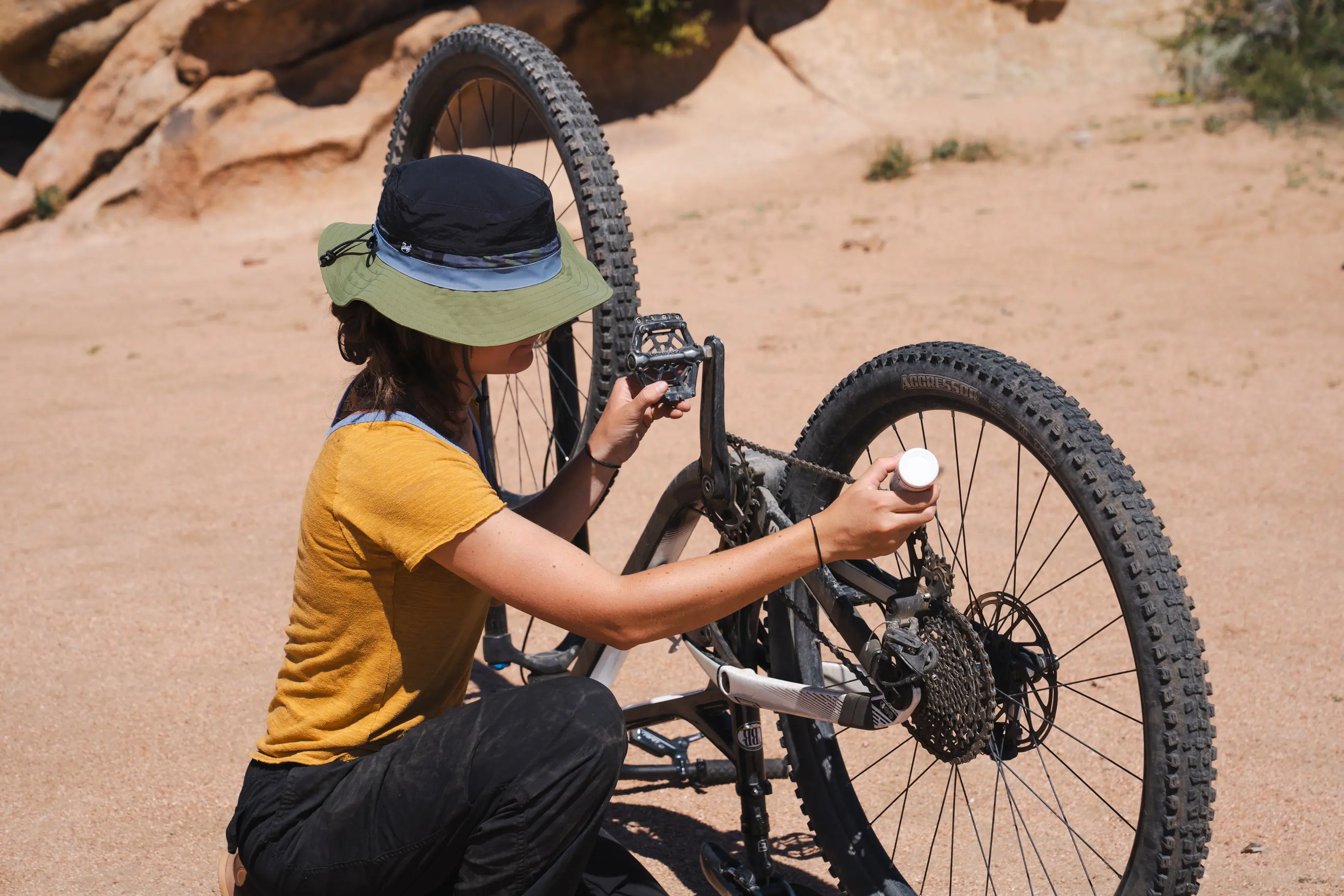



Comfort
Comfort is key when choosing a sun hat. If you plan to wear it all day, it should feel soft, be lightweight, and fit securely without causing irritation.
Materials and construction play the most significant roles in how comfortable a hat feels. Breathable fabrics like nylon, polyester, and mesh allow airflow and wick away sweat, essential in hot, humid conditions. If you’ll be hiking, fishing, or spending hours under the sun, look for a hat that feels featherlight and stays cool on your head.
Other comfort factors include brim size, stiffness, and adjustability. Some hats have toggles, chin cords, or sweatbands to fine-tune the fit. If you prefer a minimalist feel, go with a simpler design. But if a secure fit matters, especially in wind or on the move, those added features can make a big difference.
Stiffer brims offer more structure and shade, but may feel bulky with a pack or in gusty conditions. Softer, more flexible brims move more easily with you and can be more comfortable during long outings.
The Tilley LTM6 Airflo Broad Brim Hat is our top pick for all-day comfort. It strikes a near-perfect balance between structure and softness, and its recycled nylon and polyester construction keeps it breathable and lightweight even on scorching days.




Brim Size
Depending on how much of your face, neck, and shoulders you want covered from the sun, you’ll want to consider brim size when choosing the perfect sun hat. Our selection of sun hats has wide brims that range from 2.5 inches up to 3.5 inches. While these numbers may seem small, these size differences can make a significant difference in how much of you will be shaded. Smaller and larger brims both have pros and cons.
Small Brims
Smaller brims shorter than 3 inches tend to offer less sun protection but are more compact and conducive to activities like strolling around town or heading to the local block party. Style-wise, they offer a subtle look and can be more easily thrown in a backpack or beach bag. We thought that the REI Co-op Sahara Bucket Hat and Cotopaxi Tech Bucket Hat both still provided enough sun protection despite smaller, more flexible brims.
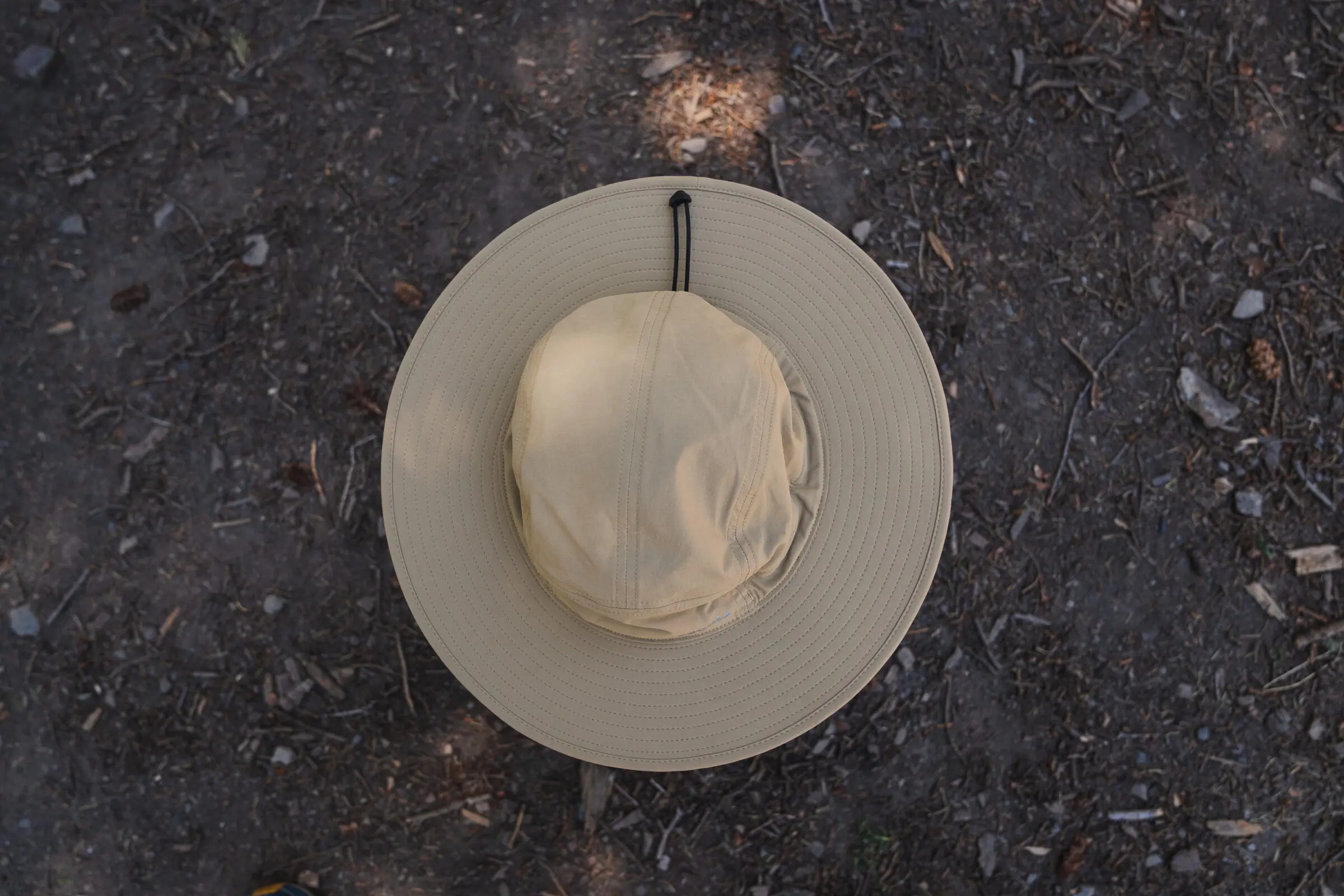



Large Brims
Larger and wider brims over 3 inches provide plenty of shade and are ideal for long days in direct sunlight, like afternoons at the beach or hours spent gardening. While they offer excellent coverage, they can be less comfortable when worn with a backpack and are generally more difficult to pack.
That said, wider brims are the most effective at blocking UV rays and minimizing glare. The Patagonia Quandary Brimmer Sun Hat has a generous brim that provides full coverage without feeling stiff or bulky, thanks to its flexible design.




Some of the sun hats in this guide feature unique brim designs and functions. For example, the Adventure and Ultra Adventure sun hats from Sunday Afternoons use a rear neck cape instead of a full wraparound brim, offering targeted protection with a more lightweight feel.
Whether you choose a compact style or a full-coverage option, make sure it matches your intended use, comfort needs, and personal style. And don’t forget a good pair of sunglasses. Check out our guide to The Best Sunglasses for the Outdoors to complete your sun-ready kit.




Sun Protection and UPF
Brim size isn’t the only factor that determines how well a hat protects you from the sun.
What Is A UPF Rating?
A sun hat’s UPF rating, or Ultraviolet Protection Factor, indicates how effectively the fabric blocks harmful UVA and UVB rays. UPF is influenced by several factors, including fabric density, fiber type, color, and any chemical treatments used during manufacturing.
Most sun hats in this guide have a UPF rating of 40+ or 50+, which means they allow only a small percentage of ultraviolet radiation to reach your skin. For example, a hat rated UPF 50+ blocks about 98 % of UV rays by letting only 1/50th pass through. Any UPF rating above 40 is considered excellent sun protection.
Garments with a UPF lower than 15 aren’t considered protective, and they won’t be effective in most outdoor situations. Nearly every hat we tested meets or exceeds the 40+ threshold, making them reliable choices for long days in intense sun.
Other Factors That Influence UPF
Generally, thicker and darker fabrics provide better UV protection than lighter or loosely woven materials. Some designs also include dark underbrims, which help reduce glare by absorbing reflected light — a key feature when hiking on snow, water, or in high alpine terrain where sun exposure is intensified.




With a UPF of 50+, a long cape to protect its wearer’s shoulders, and a large frontal brim, we felt that the Sunday Afternoons Adventure Hat performed best in full sun exposure. It consistently offered excellent coverage for the face, neck, and shoulders without feeling hot or heavy. The breathable fabric, secure fit, and thoughtful design made it one of the most comfortable and reliable hats we tested for long days in intense sunlight, whether on alpine hikes, river trips, or in the garden.
We spend a lot of time outside and know how easy it is to underestimate the sun’s strength. Whether you’re out on a big adventure or just walking the dog, protecting your skin is key. With skin cancer being the most commonly diagnosed cancer in the United States, it’s more important than ever to reduce UV exposure wherever you can. A solid sun hat is a great place to start — and if you’re looking to build a full sun-safe kit, check out our guide to The Best Sun Protection Shirts for more UPF-rated options that keep you covered and comfortable.
Adjustability and Fit
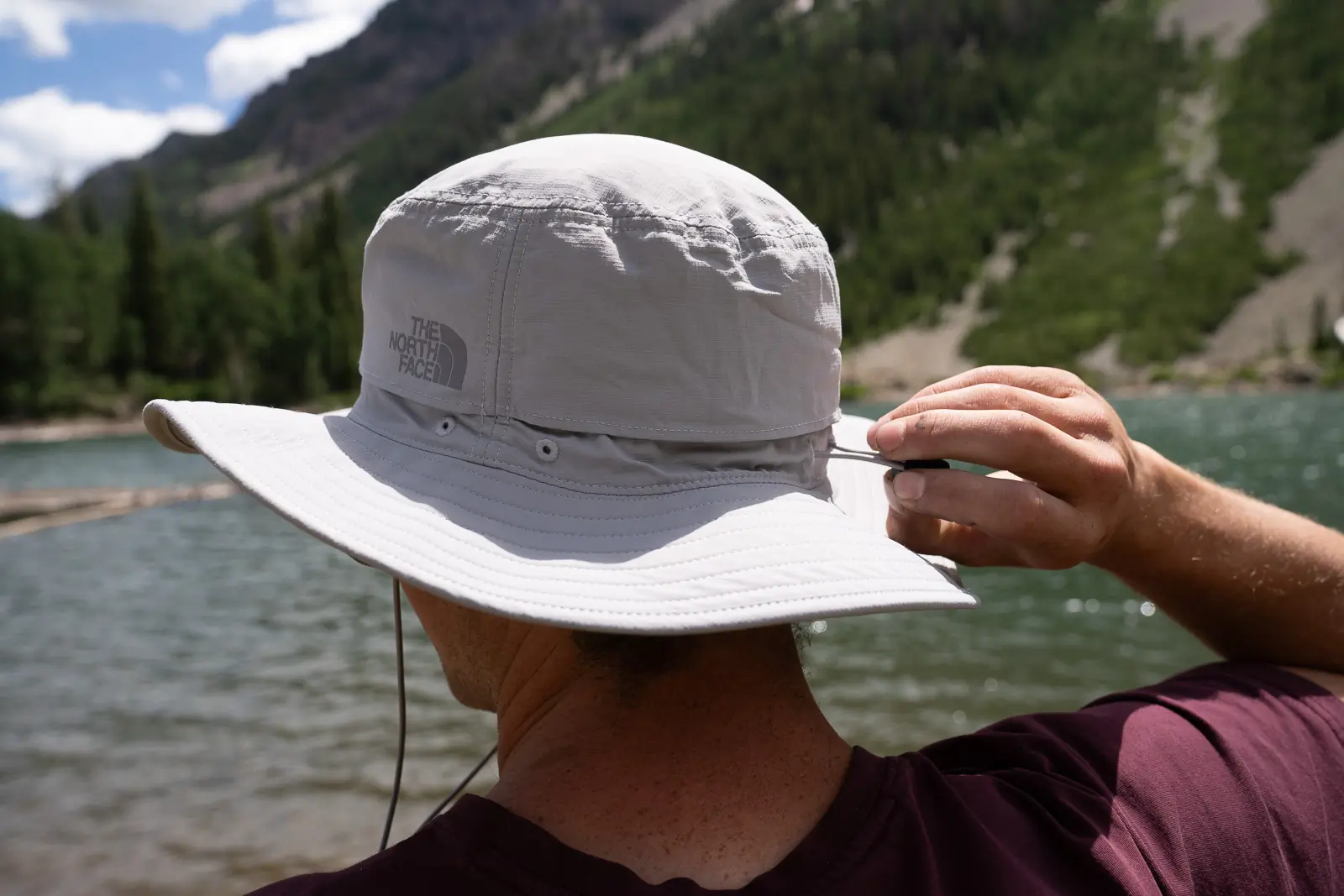



A well-fitting sun hat should feel like an extension of your body — secure, breathable, and comfortable enough to wear all day without distraction. The right fit helps the hat stay put in the wind, prevents pressure points, and maintains airflow to keep you cool and dry. Factors like sizing, crown shape, and adjustability features all come into play.
Size
Some sun hats come in general sizes (S, M, L), while others are available in more precise measurements. For example, the Filson Summer Packer Hat is offered in sizes from Small to 2XL, and the Tilley Wanderer Hat comes in numbered sizing from 7 to 7.875. If you’re considering one of these styles, measuring your head circumference beforehand is crucial. It ensures a proper fit and helps you avoid sizing issues later on.
Crown
The crown (aka the part of the hat that sits on top of your head) should rest just above your brows and ears. A proper fit means the headband is snug but not tight, secure but not constricting. If a hat slides down into your eyes or creates pressure points, it’s either too large or too small.
Adjustability
Many sun hats in this guide offer built-in adjustability, which adds comfort and versatility. Look for features like pull cords, Velcro bands, toggle systems, and chin straps. These let you fine-tune the fit based on hairstyle, wind conditions, or even if you’re loaning the hat to a friend for the day.
If adjustability is a top priority, the Outdoor Research Helios Sun Hat stood out in our testing. Its simple crown toggle and removable chin strap make it one of the most customizable and secure options, especially in gusty, high-exposure environments.
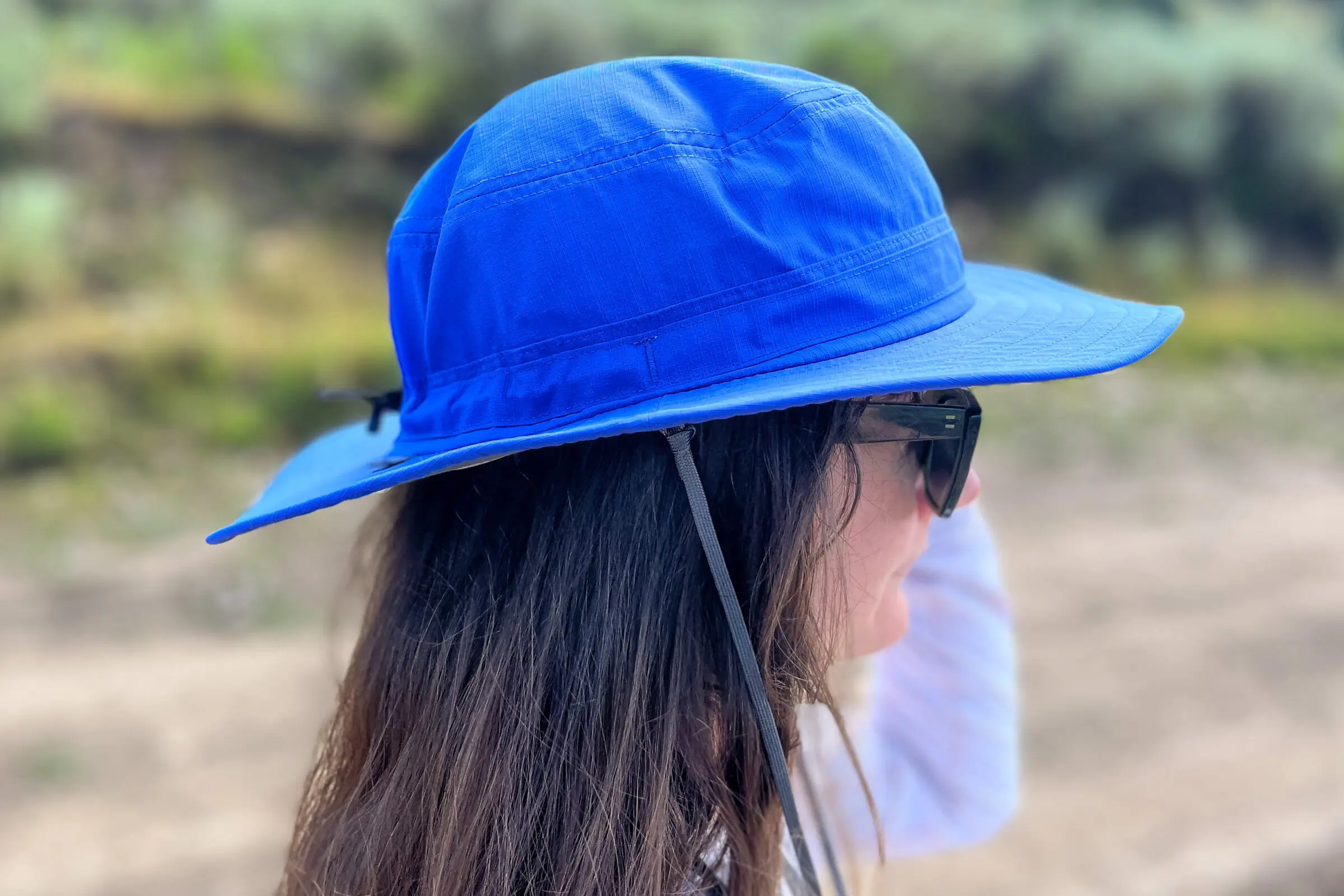



Keep in mind that some sun hats do not offer any adjustability, so getting the right size from the start is essential. These hats typically come in more specific sizing and are designed to fit without the help of toggles or drawcords. The Filson Summer Packer Hat, for example, is available in sizes ranging from Small to 2XL. Likewise, the Tilley Wanderer Hat comes in precise numerical sizing from 7 to 7.875. If you’re considering one of these models, measuring your head before ordering is absolutely crucial for a comfortable, secure fit.
Breathability
Whether you’re on a multi-day backpacking trip or playing on a beach volleyball court, the last thing you want is a sun hat that traps heat and sweat. A breathable hat can make all the difference, keeping you cool, comfortable, and focused on the moment. Sun hats made with lightweight fabrics and mesh ventilation zones help air flow around your head, preventing sweat buildup and overheating. Materials like nylon, polyester, and even straw are often woven to allow airflow while still offering solid UV protection. Many of the top-performing hats in our guide include mesh inserts or vented crowns specifically to enhance breathability.
A well-ventilated hat helps reduce itchiness, chafing, and sweat on areas like the crown, forehead, and scalp — even in hot and humid conditions. Just be sure that breathability doesn’t come at the expense of sun protection. If a hat is too thin or porous, it may not meet UPF standards or block enough UV radiation.




During testing, we were especially impressed with the breathability of the Buff Explore Booney Hat and the North Face Horizon Breeze Brimmer Hat, which has a full wrap-around mesh panel that kept our tester’s scalp and neck cool on long hikes. The Outdoor Research Women’s Oasis Sun Hat also stood out thanks to its moisture-wicking TransAction™ headband, which helped manage sweat and kept the crown feeling dry even during a long afternoon of yard work in the summer sun.
Packability and Storage
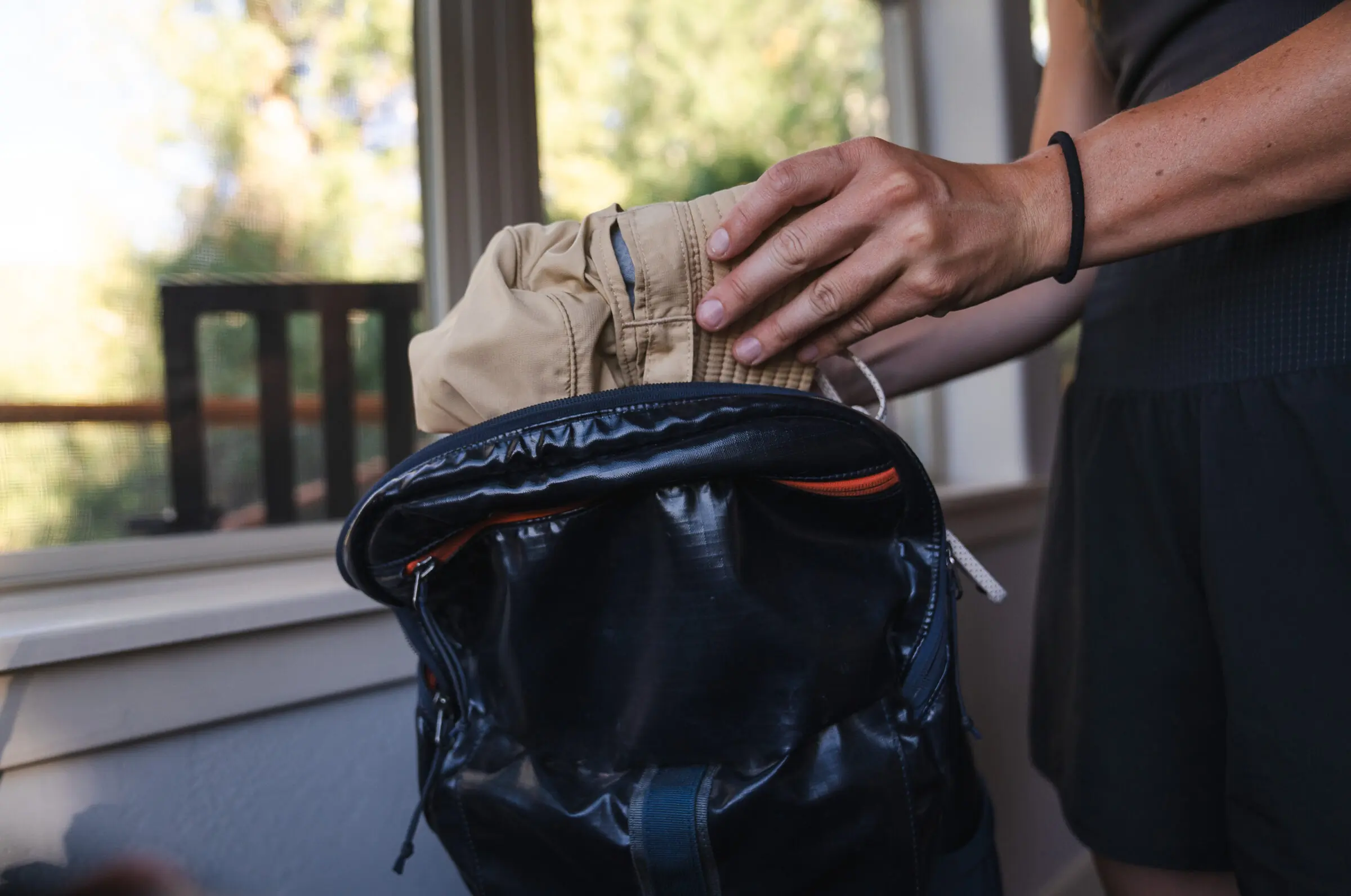



A sun hat is essential for any trip, regardless of the season. Whether you’re backpacking in the mountains or heading to a tropical destination, bringing a travel-friendly hat can protect you from unexpected sun exposure.
When shopping for a packable hat, consider these key factors.
Packability
How easily can the hat fold, roll, or collapse into your bag? Hats made from soft, flexible fabrics without internal wiring tend to pack down the smallest. These are great for travel but may have floppier or smaller brims that offer less full-coverage protection. We especially liked the Buff Explore Booney Hat for its ability to pack into its own internal pocket — perfect for tossing in a backpack or glove compartment.
Shape Retention
A good travel hat should bounce back into shape after being unpacked. Nylon and polyester hats tend to wrinkle, but they often smooth out after a few hours in warm or humid weather. Sturdier styles like the Filson Packer or the Tilly Wanderer are designed to hold their shapes, even after being squished in a bag. Just give them a bit of time in the sun and they’re usually good to go. If you prefer not to pack your hat in a suitcase, you can always clip it to your backpack or carry-on with a simple hat clip or carabiner.
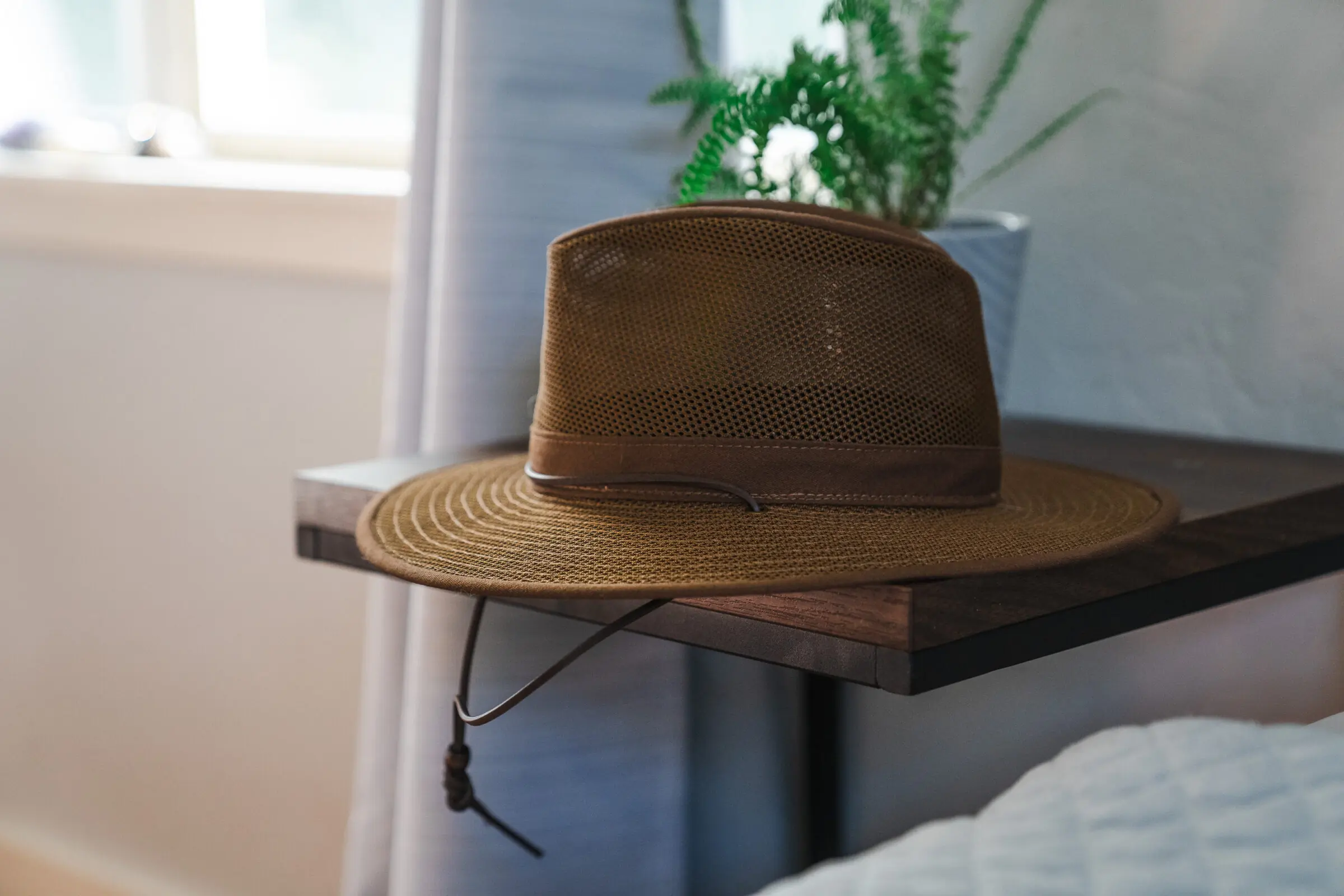



Storage Tips: When you’re not using your hat, store it properly to prolong its lifespan. Hang it by the crown on a hook or keep it upright on a shelf. For long-term storage, stuff the crown with soft tissue paper to help maintain its shape. Avoid leaving your hat rolled or crushed for a long time, as this can weaken the structure and potentially lower its UPF rating over time.
Price & Value
When deciding on the best sun hat for you, don’t feel like you need to totally break the bank. No matter the price, a proper sun hat should be durably made, have a 30+ UPF rating, and be comfortable enough to wear during activities throughout the day.




If you have a little more cash to spend, we recommend considering hats like the Patagonia Quandary Brimmer Sun Hat ($65). More expensive options like the Tilley LTM6 Airflo Broad Brim Hat ($99), Tilley Wanderer Hat, and Filson Summer Packer ($85) are steeply priced, but you’ll know that you’re purchasing a hat made with quality and protection in mind.
If your budget is more in the intermediate range, consider sun hats like The North Face Horizon Breeze Brimmer Hat ($45), Sunday Afternoons Adventure Hat ($42), Sunday Afternoons Ultra Adventure Hat ($50), Buff Explore Booney Hat ($45), REI Co-op Sahara Bucket Hat ($40), Outdoor Research Helios Sun Hat ($40), and Outdoor Research Sunbriolet Sun Hat ($45). At 50 bucks or less, these sun hats are superb options.
In the most budget-friendly range that doesn’t sacrifice quality or practicality, the Columbia Bora Bora Booney II Hat ($26) takes the cake.
Keep in mind that when you purchase a sun hat, you are investing in a clothing item and in your health, as you are saving your skin and eyes from sunburn, UV rays, and the risk of skin cancer.
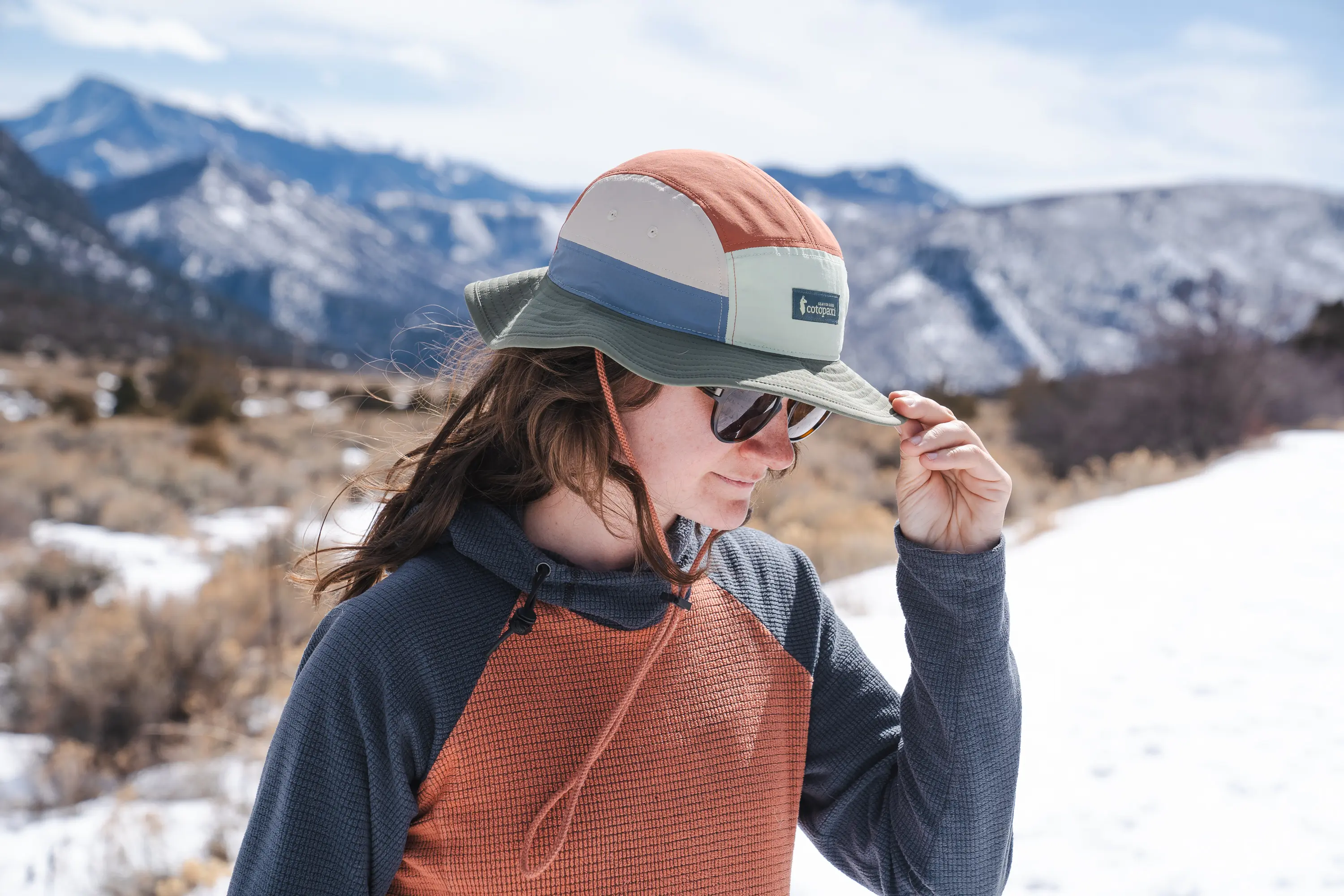



Frequently Asked Questions
While it totally depends on personal preference, intended use, and style, it is possible to find the best sun hat for you. All of these sun hats listed are fantastic in their own unique ways and functions, we can’t help but give major props to Patagonia with their Quandary Brimmer Sun Hat. Not only is it stylish, it’s also protective and easy to wear on a hike, bike ride or kayaking trip.
When finding the best sun hat, it’s important to consider where, how, and what environment you’ll be rocking the hat in. Be sure to find one with the most comfortable band, ideal brim size, and style options that you may prefer.
To find the right fit, we recommend trying different sizes and shapes on before purchasing if possible. If you’re still unsure of what to grab, try to scroll through our buyer’s guide and consider the various specs and prices of all the hats listed.
As long as your chosen sun hat has a decent UPF rating, a comfortable fit, and suits your style preferences, we say rock it all year long.
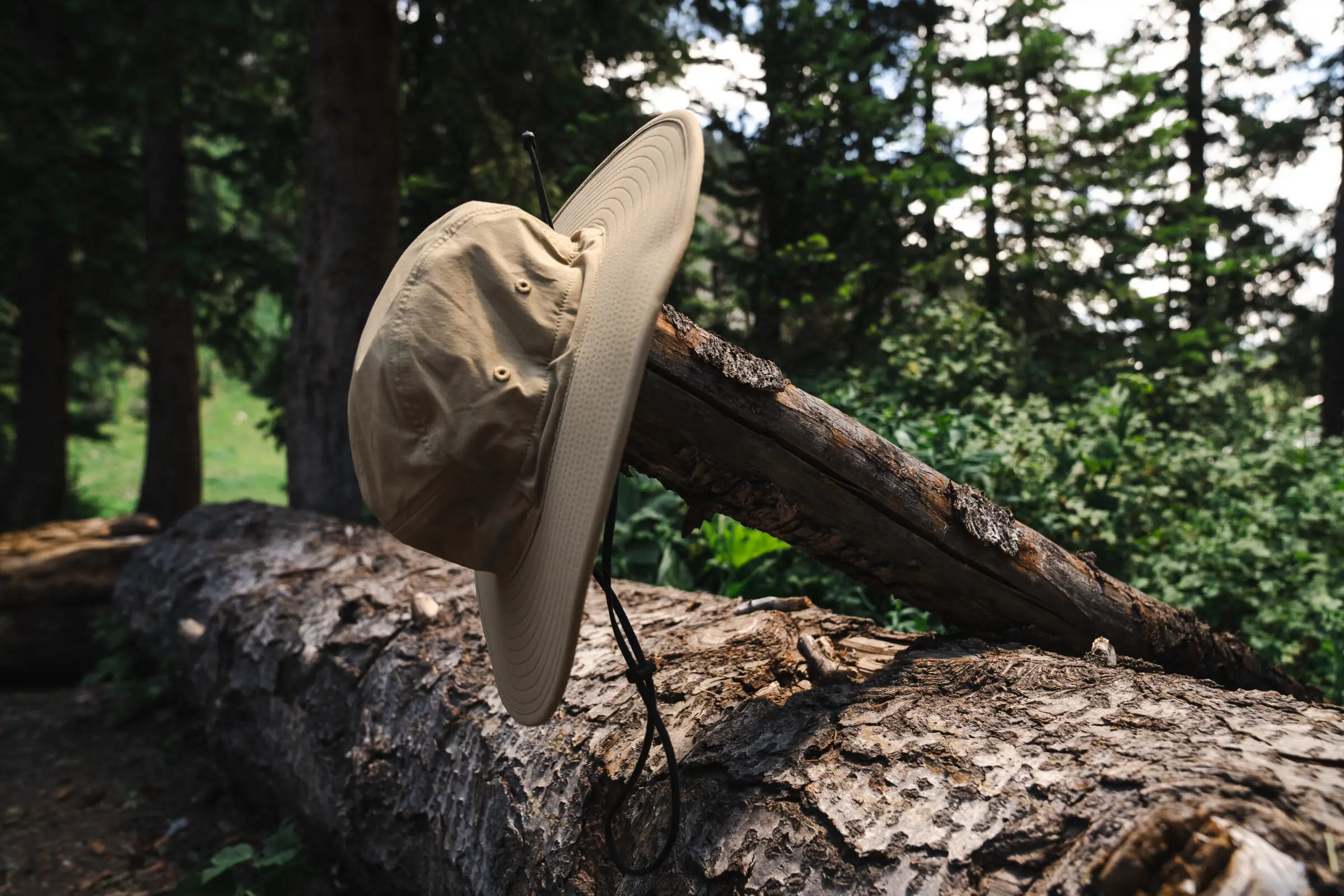



Sun hats work by protecting your head, face, neck, and sometimes shoulders from prolonged exposure to UV rays by providing shade and UPF (ultraviolet protection factor) via their brims, fabrics, and overall design. The wide brims found on sun hats not only protect the wearer from the harsh effects of the sun, but also can lessen the risk of overheating, sun sickness and other health issues. Standard ball caps may shield your face and scalp from the sun, but won’t protect your neck and shoulders, which is why we particularly love a well-designed sun hat.
Hats with tighter weaves and thicker, darker fabrics tend to be the most shielding from UV rays. However, thanks to certain treatments and coatings, you can find a perfectly breathable sun hat that won’t be too heavy or dense on your head.
When selecting a sun hat, be sure to check for its UPF, fit, and brim size. Keeping these features in mind will help you find the perfect shade for your head.
To ensure the longevity of your sun hat, caring for and routinely cleaning it is pretty crucial. Here are some tips to help you keep your sun hat looking, functioning, and feeling its best:
Maintain and store it properly: After each use, shake or brush off dirt and debris. Store your hat in a cool, dry place where it isn’t folded or crushed. Keep it out of direct sunlight to prevent fading and preserve its UPF rating. Loosen any toggles or cords to help them retain their shape.
Clean as needed: For small stains, spot clean with mild soap and water using a soft cloth. If your hat gets especially dirty, check the manufacturer’s care instructions before washing it fully. Avoid bleach or harsh chemicals, which can degrade the fabric and lower its UV protection.
Air dry only: Let your hat air dry after cleaning or exposure to moisture. Skip the dryer, as high heat can shrink fabric or distort the shape. Dry it in the shade to avoid fading and preserve UPF performance.
Most importantly, always check the manufacturer’s instructions for how to clean and store your sun hat. Hats made with materials like straw and other weaves typically need a different maintenance routine than those made with cotton, nylon or polyester. Overall, the listed steps above should be a great starting guideline for making your investment in a sun hat even more worth it.
UPF measures how well clothing blocks UV rays. A UPF 50+ rating means only 1/50th of UV radiation passes through the fabric — ideal for outdoor gear like sun hats and shirts.
SPF, found in sunscreen, measures protection against UVB rays. An SPF 50 sunscreen lets you stay in the sun about 50 times longer than without it, though reapplication is still key.
For full protection, use both. Pairing a UPF-rated sun hat with high-SPF sunscreen gives you solid coverage for everything from hiking and gardening to weekend markets.
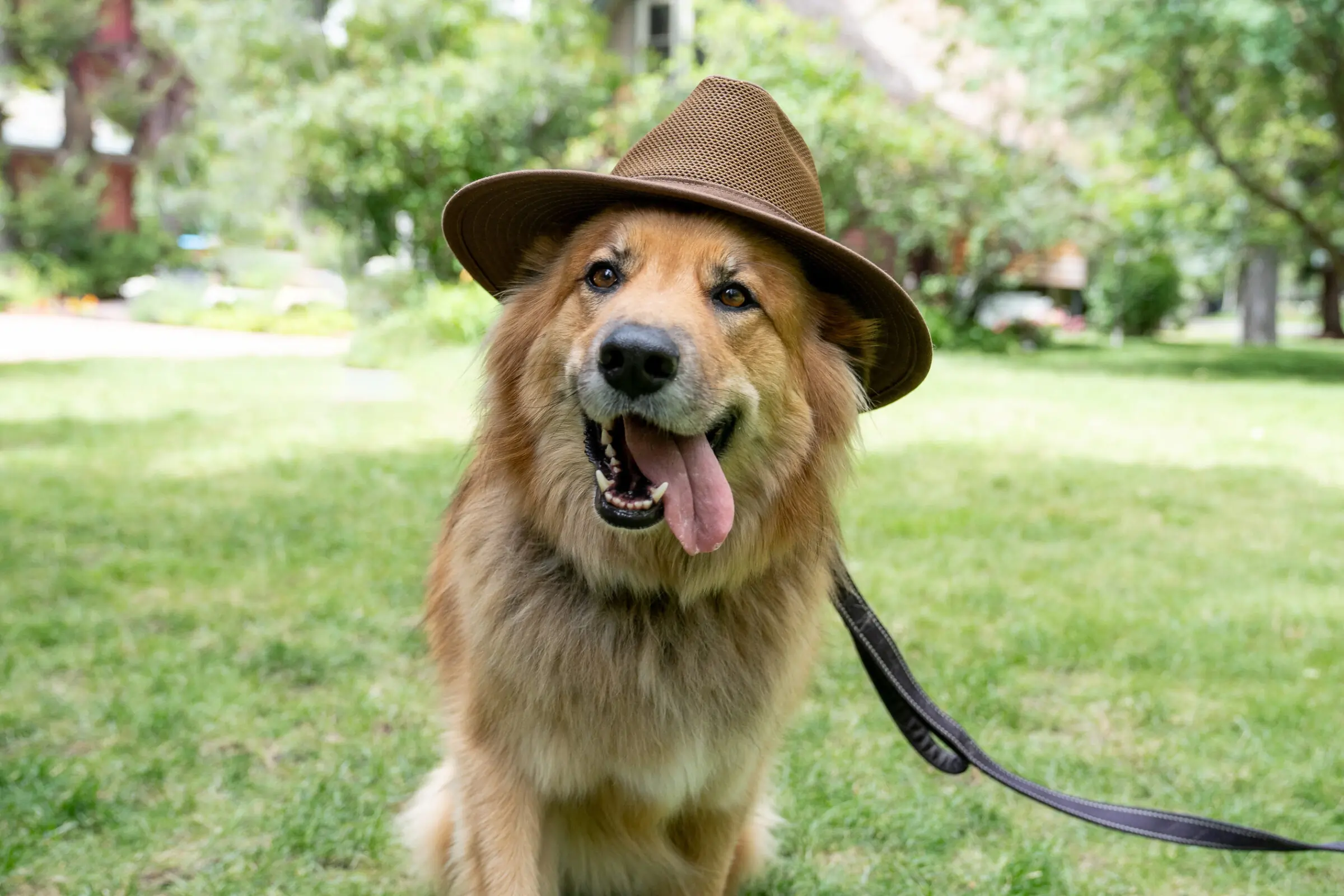





The Best Sun Shirts of 2025
We tested the best sun shirts from REI, Black Diamond, Patagonia, Mountain Hardwear, and more to help you find the best option for your needs and budget.


The Best Sunglasses for the Outdoors in 2025
Go beyond style with sunglasses that combine classic good looks with next-level technology and design.
